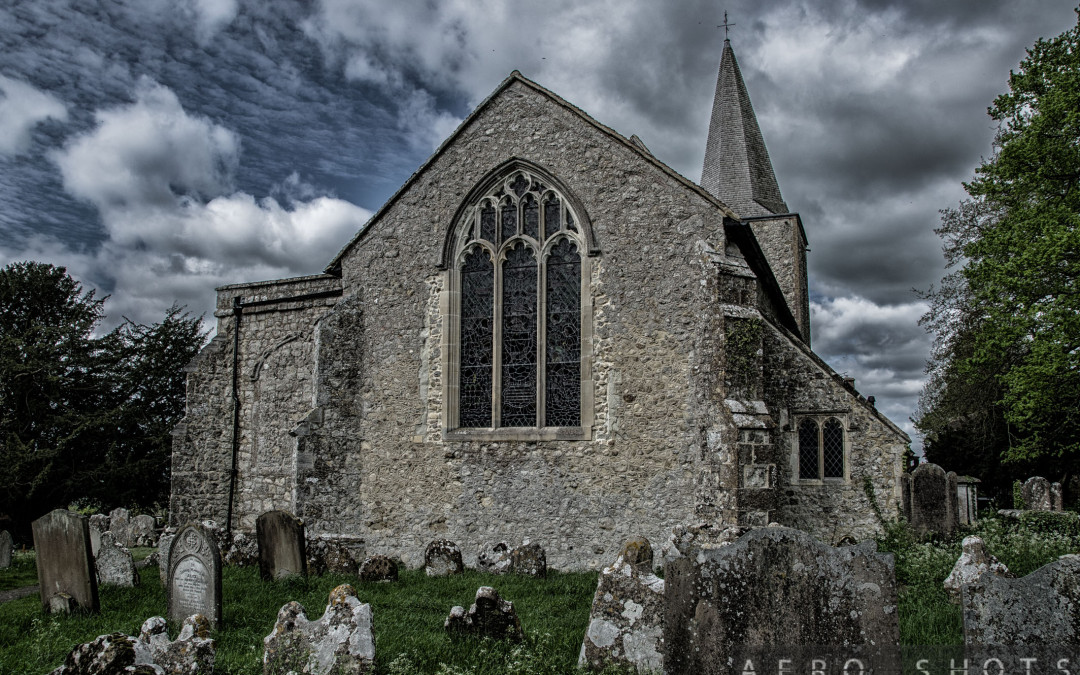
by Lufthansa Flyer | Mar 28, 2014 | Featured, Trip Reports |
On a recent trip to the UK, I made the executive decision to surprise my wife with something that I KNOW would have been of interest to her. For those of you who don’t know her (thats 99.9% of you), one of her hobbies is the study of historic places that exhibit paranormal behavior. Don’t misinterpret, she is not one of those nut jobs running around on TV screaming their heads off when they hear a door creak. She is every bit the ‘analyst’ and simply enjoys the combination of history, legends and things that have no answer.
So in my infinite wisdom I did a bit of due diligence with the help of Google and Wikipedia and discovered the tiny hamlet of Pluckey located in the district of Kent in England. After further research, I found that the area around Pluckley was considered to be among the most ‘haunted’ regions that anyone could find in the UK. Plus, it was a very reasonable 1.5 hour train ride from London which would make for a perfect day trip. Everything that I read on Pluckley suggested that it would be a unique experience, especially for those with an interest in the paranormal.
So here I thought I was the good and occasionally considerate husband and promised her a great excursion that would focus completely on her interests (plane-spotting was a non-starter in Pluckey unfortunately). She loved the idea and off we went.
Well in short, I completely miscalculated most of the excursion. I failed to appreciate that most of the ‘good stuff’ as far as haunted forests and buildings are concerned were in the VICINITY of Pluckley, and not in Pluckley. The main attractions were anywhere from 2-10 miles from the village and without a car it would be impossible to ever seen them within a few hours. Additionally, I miscalculated the fact that she was not in a mood to walk 1.5 miles from the train station to the village on a 2 lane road that was not sympathetic to pedestrians, especially the American tourist kind……And of course she would not let me forget the fact that we would need to walk back the same 1.5 miles to the train station.
However all WAS NOT lost……
What we did discover was a beautiful old Church whose foundations date back to the 11th century. The St. Nicholas Church of the Canterbury Diocese has its history dating back to Norman times and according to what I’ve learned of the Church, not much has changed other than a few minor improvements to the building and grounds. According to the information I could find, the Church building’s foundation as it stands today dates back to the 13th century, having had replaced previous structures that preceded it. Also of note is the fact that the Church suffered extensive damage after a German V1 Flying Bomb struck nearby during World War II.
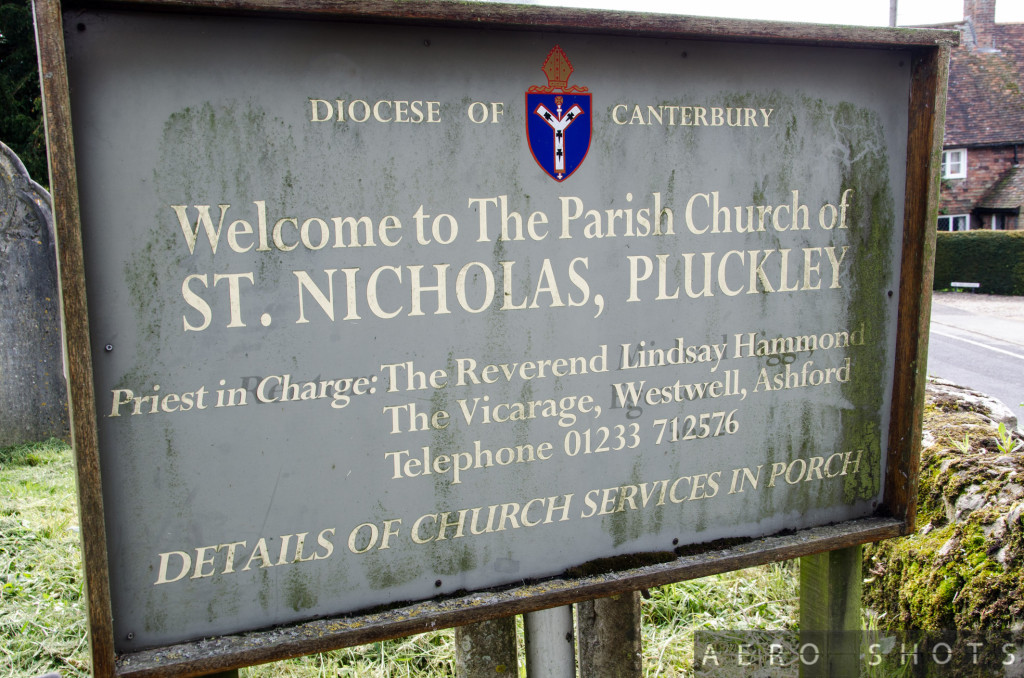
Unfortunately the Church was locked and we could not appreciate the interior, but we did spend quite some time walking through the cemetery which ultimately made our visit a memorable one. The cemetery has a certain beauty and mystique to it, as it holds hundreds of years of memorials for locals who are interred there.
No words that I can continue to type could explain what it felt like walking by tombstones dating back hundreds of years. Many of them have weathered so much that there was no way to tell how old they really were. The oldest legible ones dated back to the mid 18th century so I could only imagine how much older some of the other tombstones could have been. Mother nature has also had an influence on the cemetery which will bear out in some of the photos. If your travels take you to the Southwest of London, and you happen to be near the town, it’s certainly worth a visit especially if you have a car which will really allow you to appreciate the area! 😉
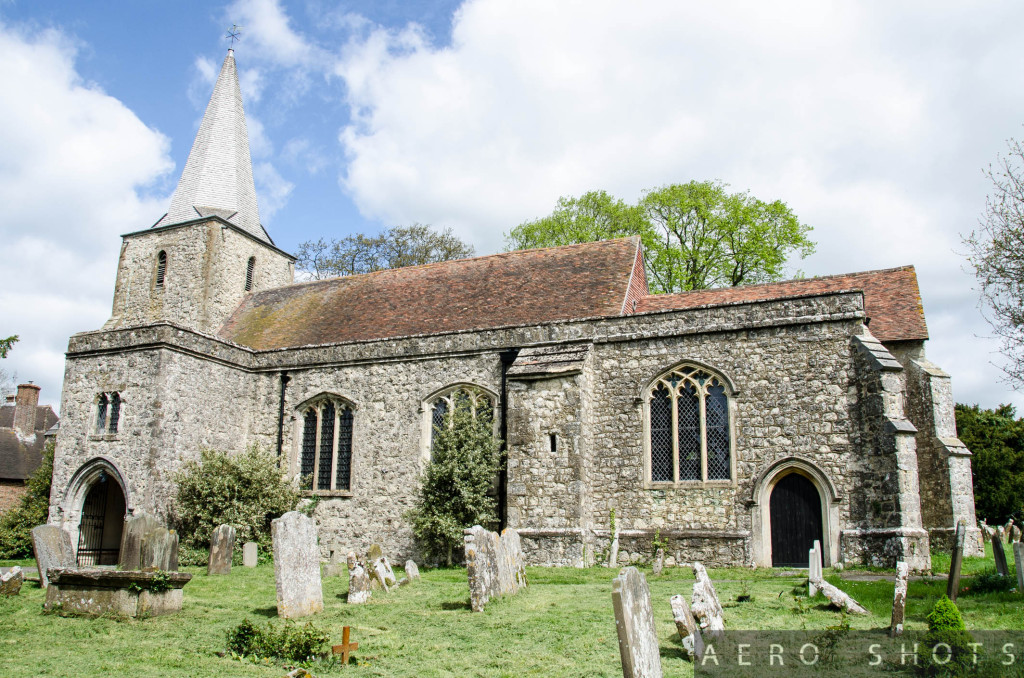
A Church with a history dating back to the Norman Conquests.
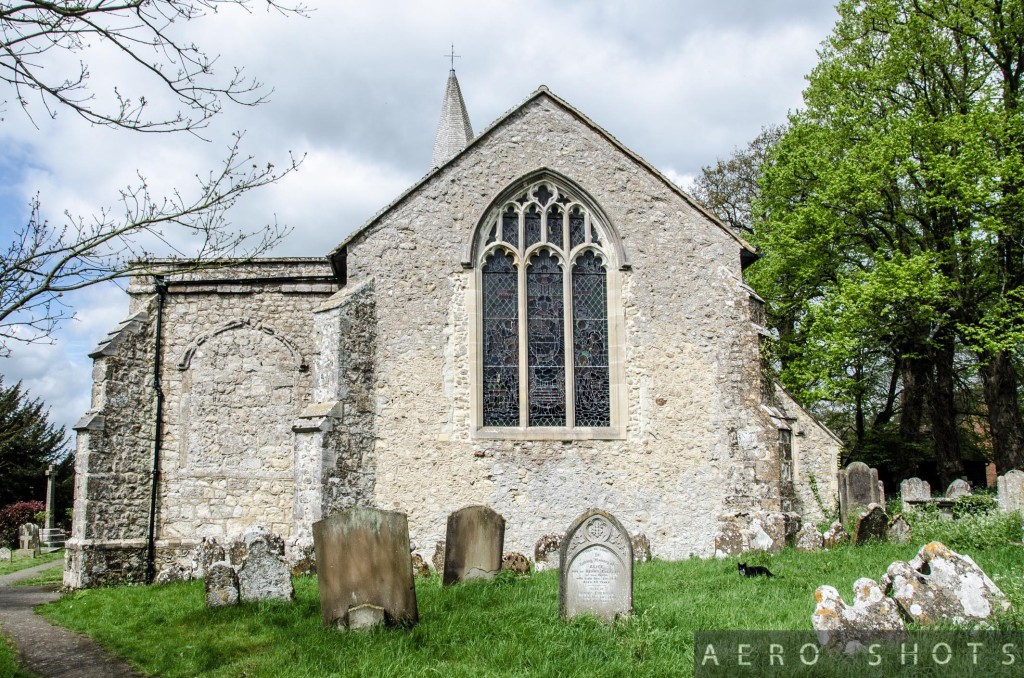

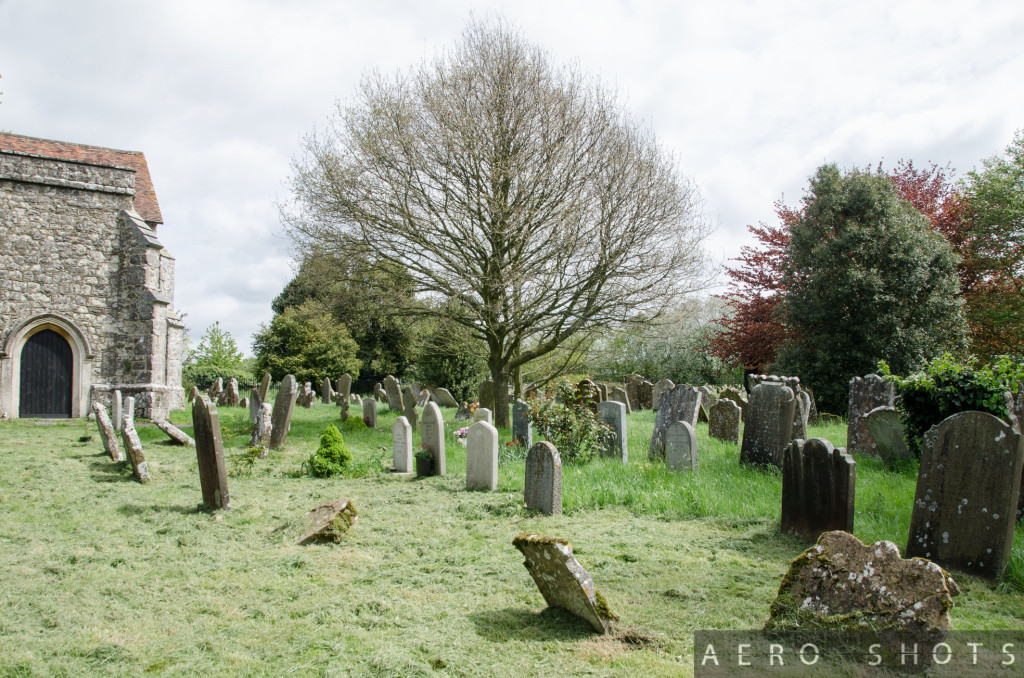
The ancient cemetery contains centuries of memorials…..
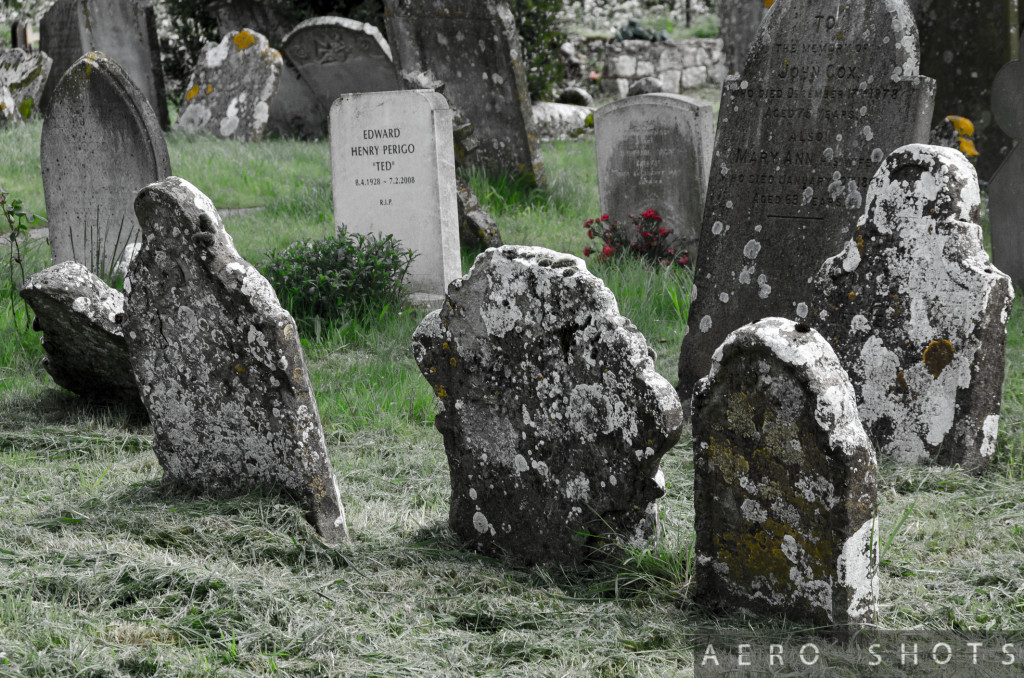
A modern tombstone stands somewhat out of place among its ancient peers.
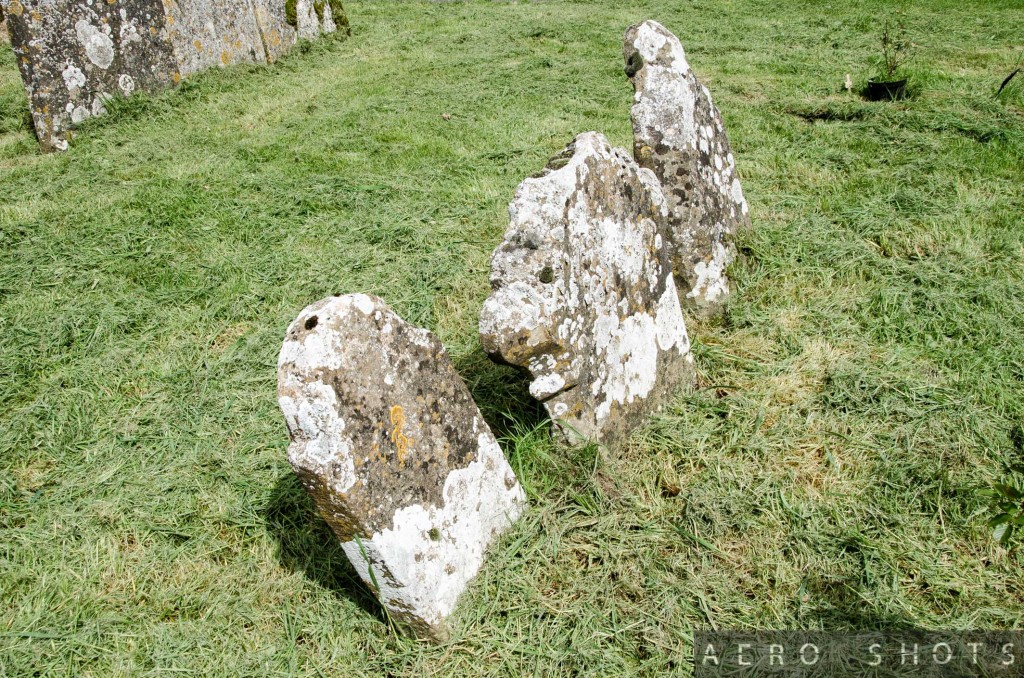
Most memorials were weathered beyond recognition.
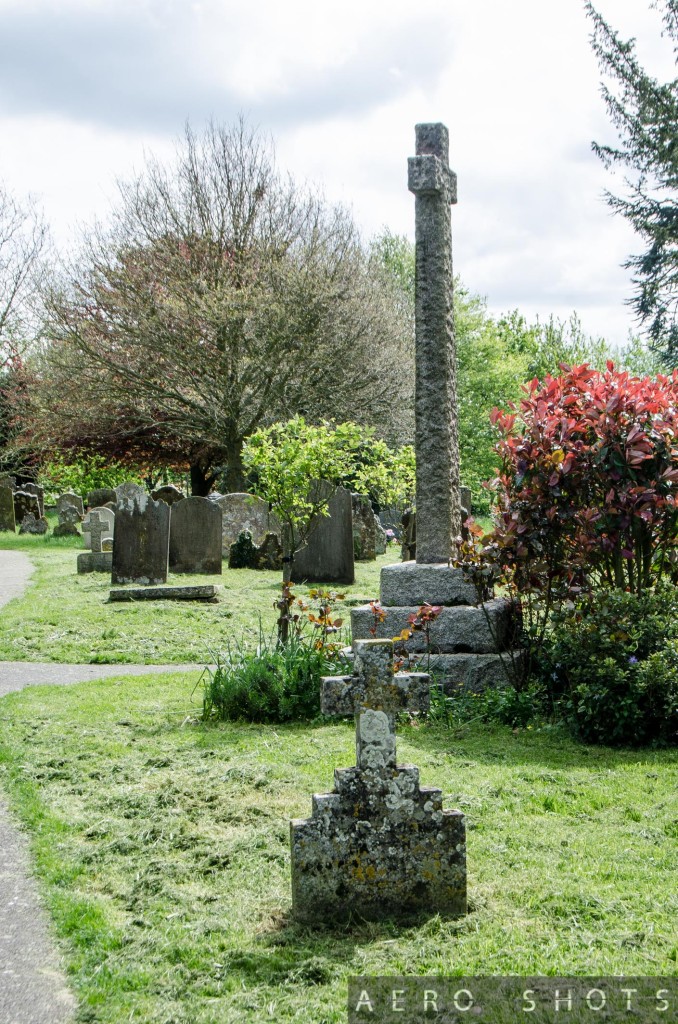
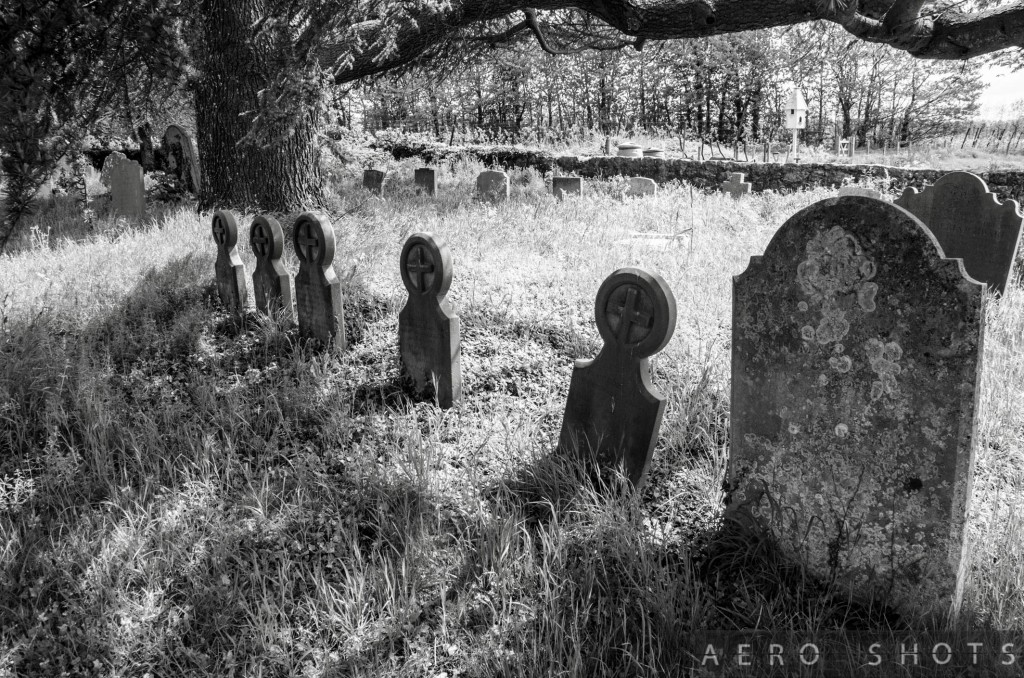
I would wager that some of these tombstones predate the tree in the background….
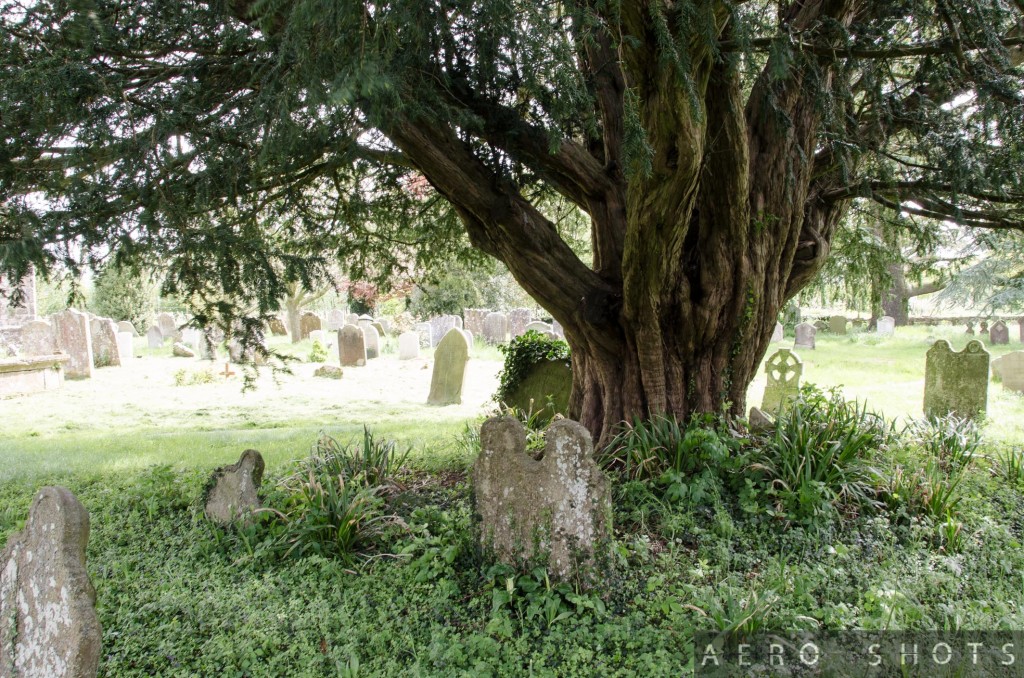
Another example where the memorials were here before the tree.
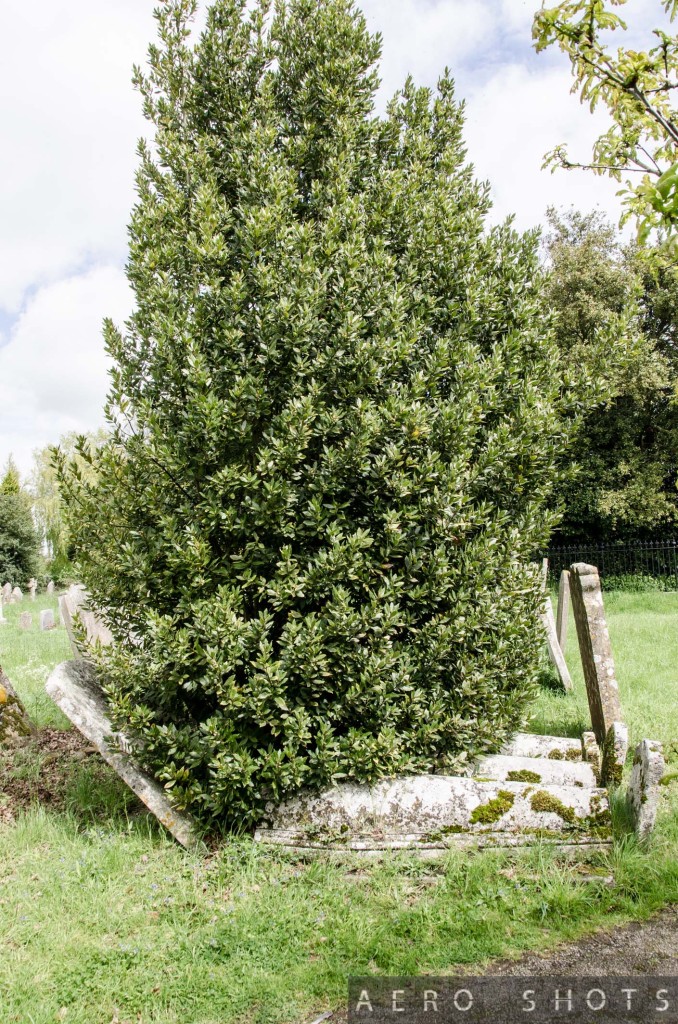
However, Mother Nature is beginning to take over. Other than basic mowing, little else has been done to preserve the cemetery.
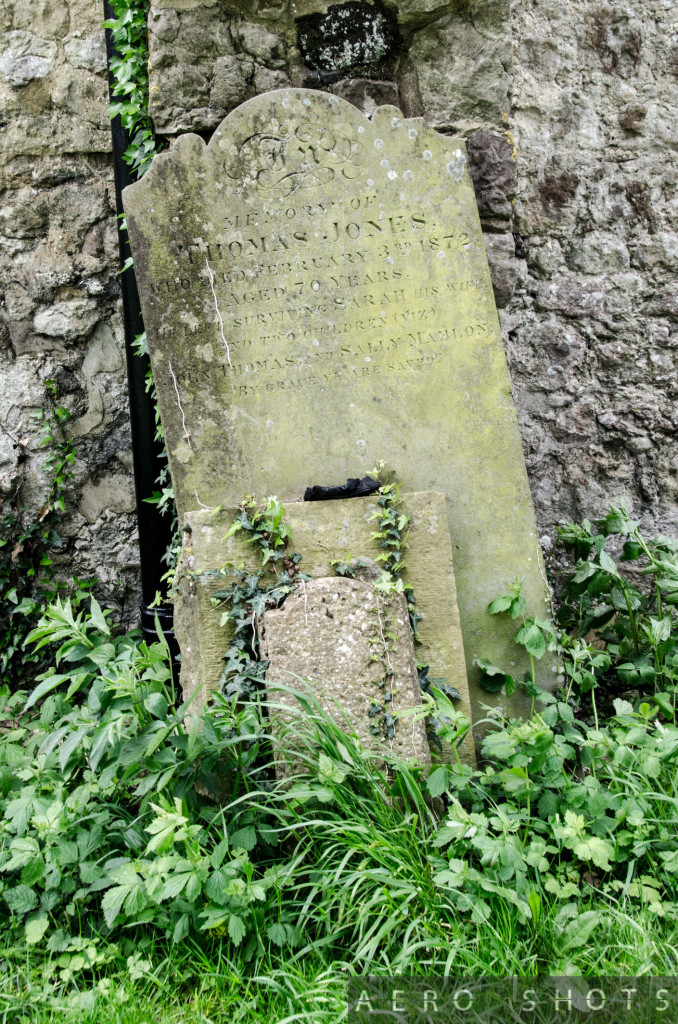
19 and 18th century memorials were still legible, but anything older was beyond recognition.
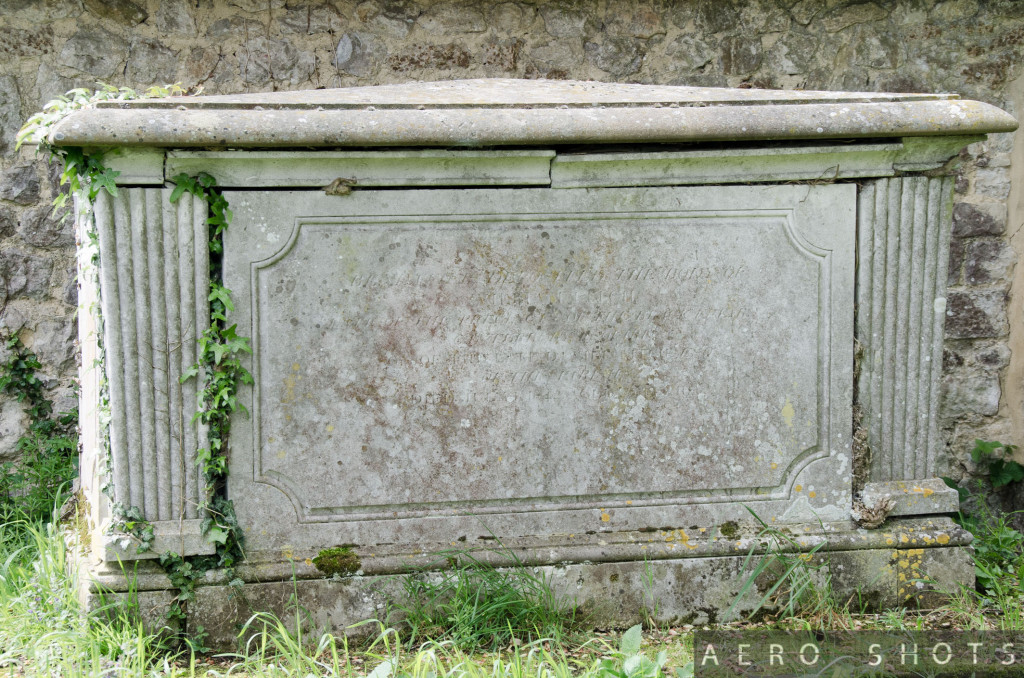
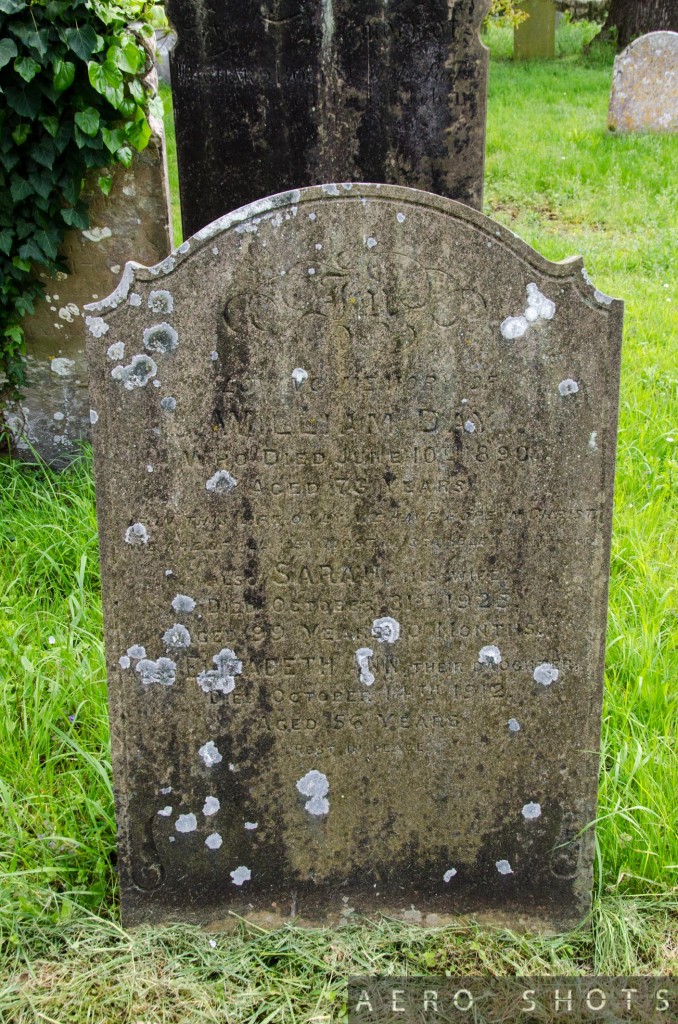
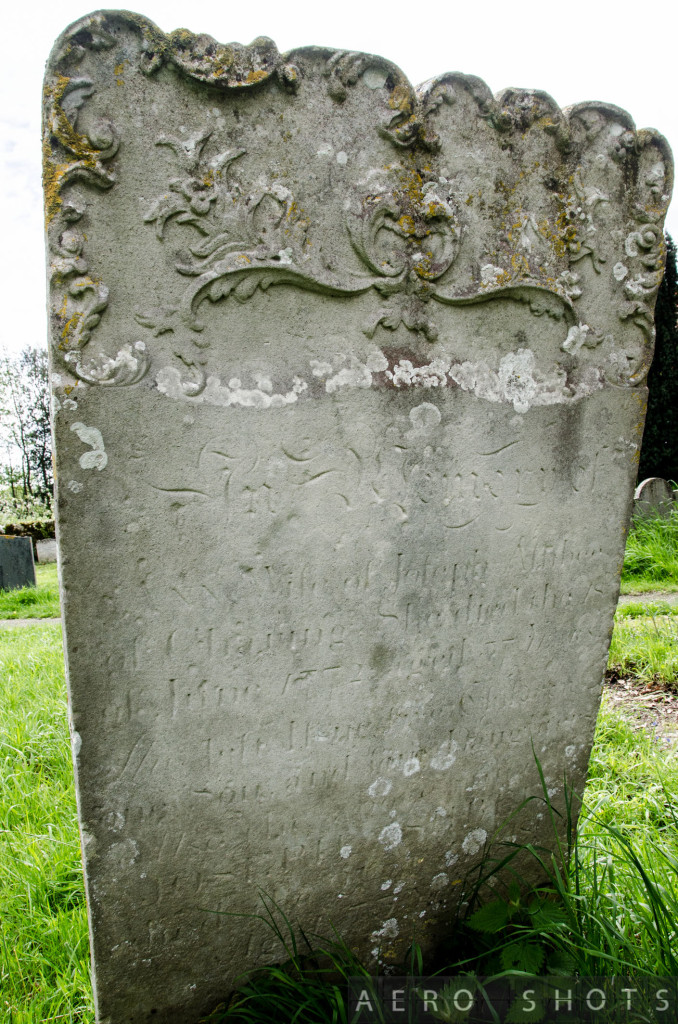
Recent Trip Reports:
Cachticky Hrad, Slovakia
Spis Hrad, Slovakia
Sheraton Lisboa in Lisbon, Portugal
Lisbon’s Baixa District
Vienna’s Naschmarkt
.

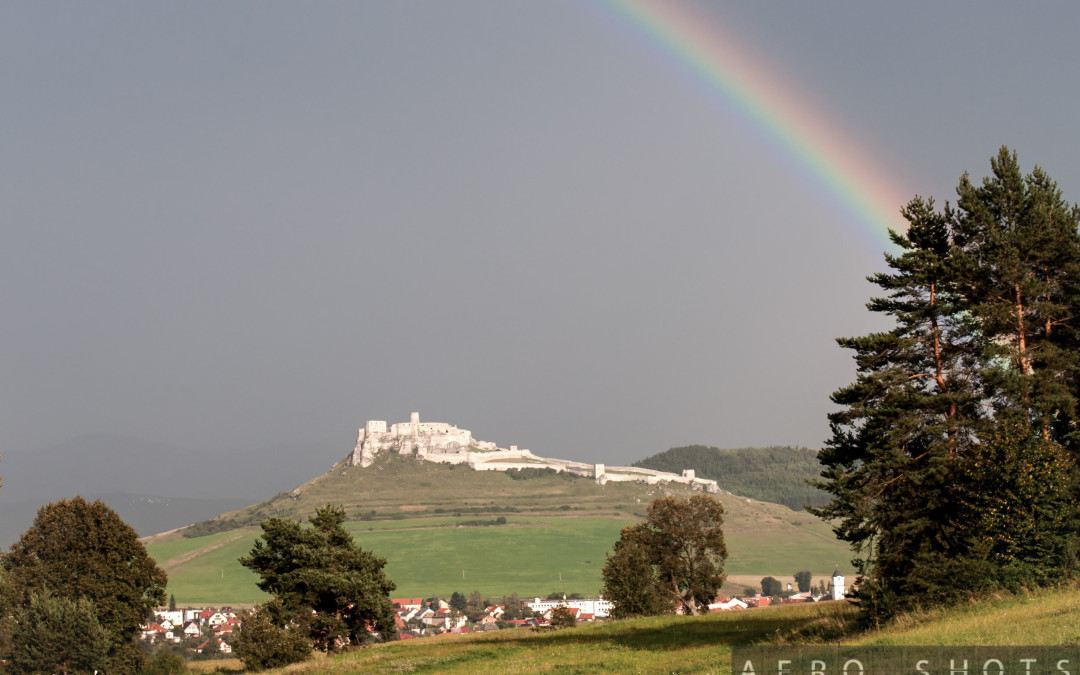
by Lufthansa Flyer | Mar 21, 2014 | Featured, Trip Reports |
In another rare exception where I play the part of tourist while in Slovakia (the other was a visit to Cachticky Hrad), we took a day trip from our tiny village enclave to visit one of Slovakia’s UNESCO gems situated in the heart of the country.
Spiš Castle’s foundations date back to the 12th century when it served as a northern boundary Fort for the Hungarian state at the time. It would the become the seat of rulers of the Spiš region for centuries. In the 15th century the castle went through a major upgrade under owner Stefan Zapolsky who added a Chapel, Knight’s Hall and a Palace. His son Jan, would be born in the Castle and would become king of Hungary.
The Castle suffered extensive damage as a result of a major fire in 1780 and fell into ruins for much of the 19th and 20th centuries. It was only through the efforts of conservationists that began in 1970 that allowed Spiš to be rebuilt to what we find today. Visitors to the castle will find extremely well kept grounds with key areas of the castle restored to the point that much of it is accessible to the public. Within the castle’s museum, visitors can see recreations of dining areas, armories, a chapel and torture chamber.
Spiš is among the largest fortress-type castles in all of Europe and became a UNESCO World Heritage site in 1993 along with Levoca, a nearby town nearly under the castle’s shadow. Access to the Castle is easy since their are major roadways that pass near the grounds. Aside from the Castle, the villages and towns nearby offer some of the best examples and insights in Slovakian heritage that you will find anywhere in the country. Should your travel plans take you to the area, please let me know and I can suggest how to enjoy the area as a ‘local’!
At this point I’ll put my keyboard on mute and let the photos tell more of the story on this wonderful place…….
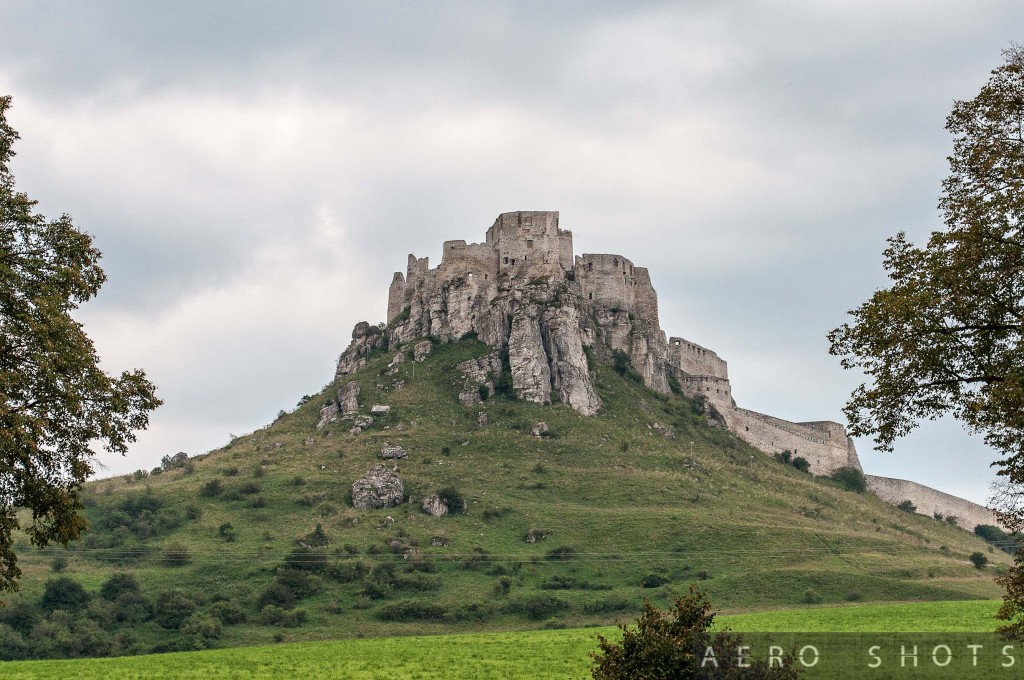
A look at Spiš as we pass by to the west.
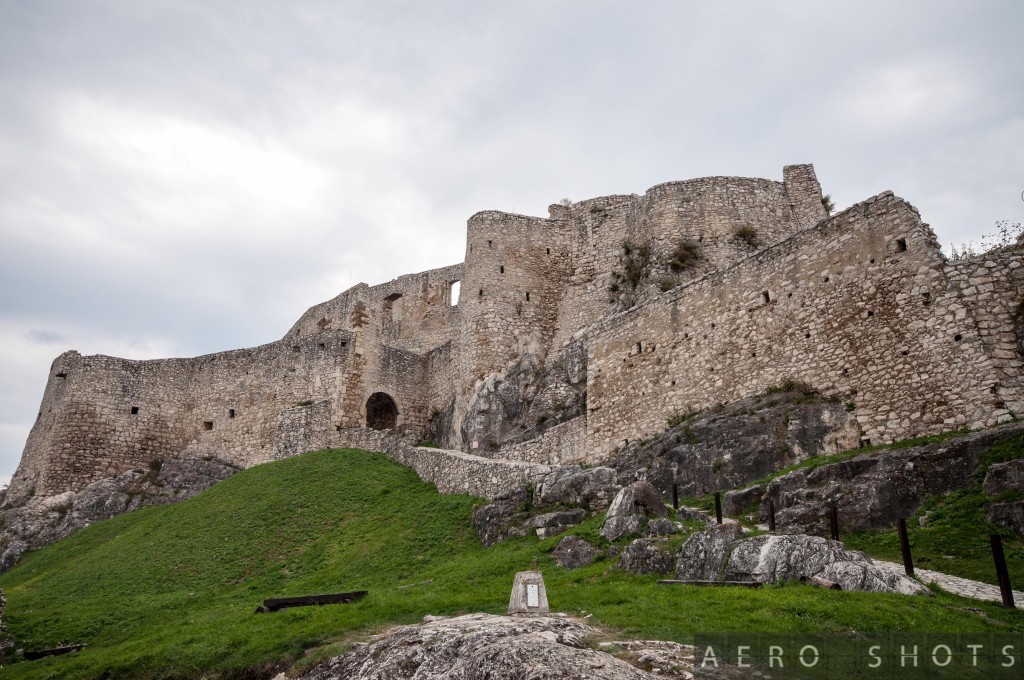
Approaching the main entrance to the Castle. The incline was worse than it appears!

This view shows a ‘rock formation’ depicting a deer at the base of the Castle. Speaking to locals about it, they said that it was a ‘gift’ from a few Britskej Alkoholici. I don’t doubt it.
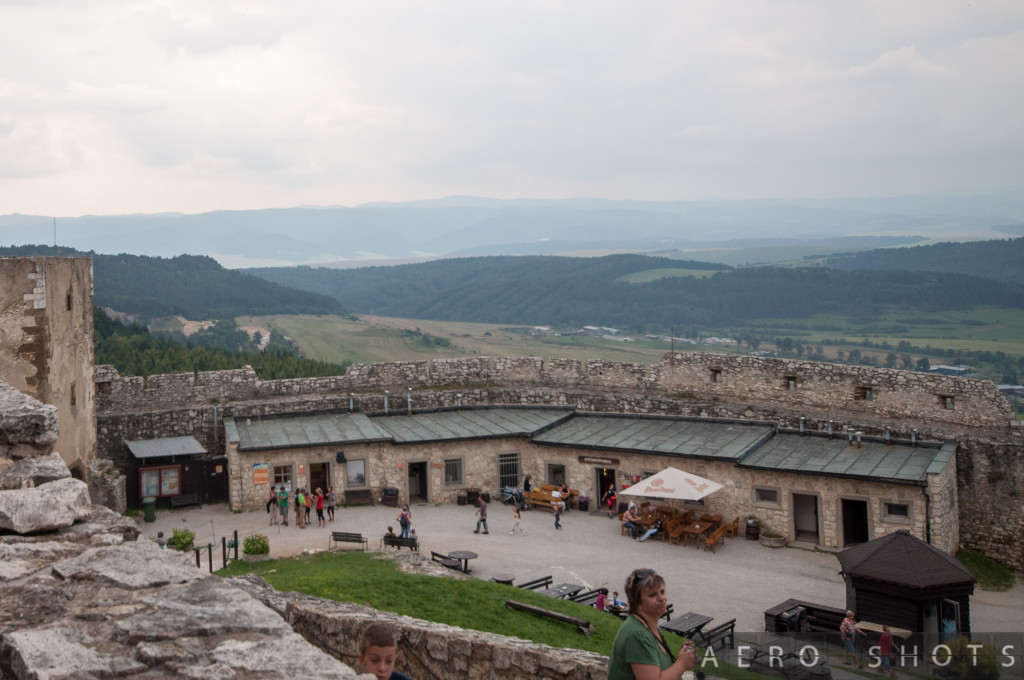
At the entrance of the Castle visitors will find the ticket office, a souvenir shop, a small restaurant and restrooms.

Once inside the Castle grounds, its size really starts to play out. Massive walls and buttresses protect the Castle’s extensive footprint.
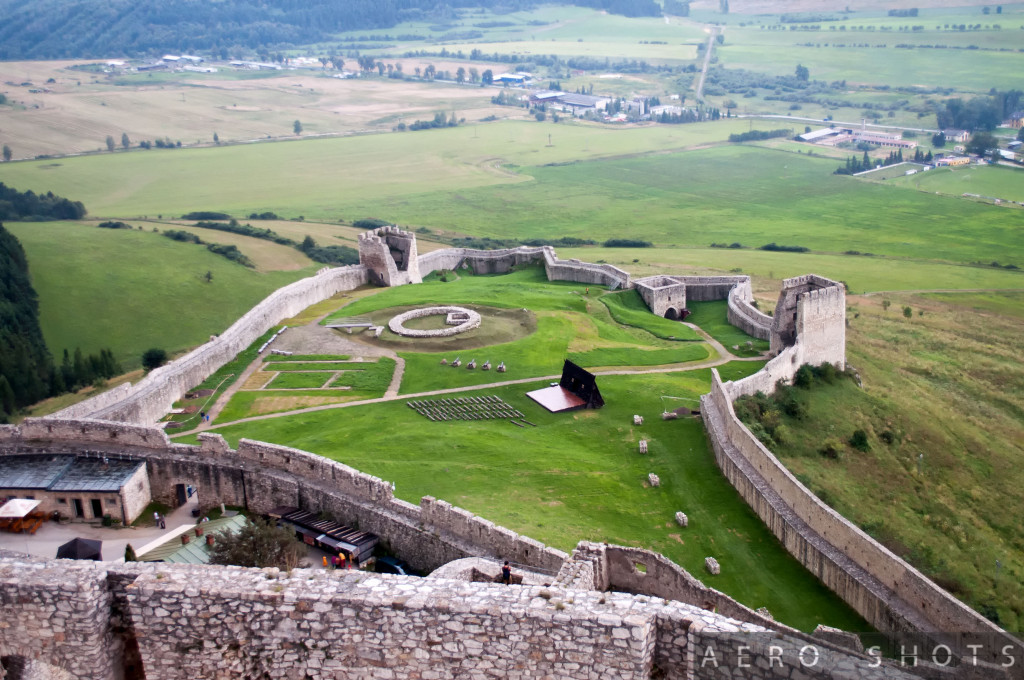
Looking down into the main Courtyard.
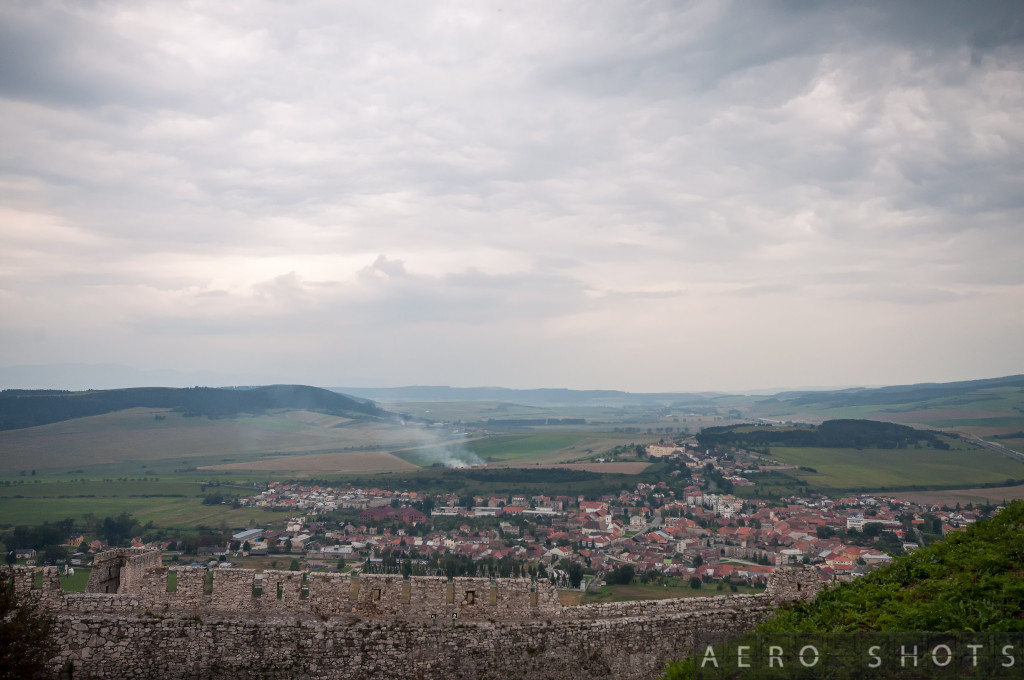
The Castle’s elevation allows for spectacular views to the horizon. No doubt a prerequisite for any Castle!
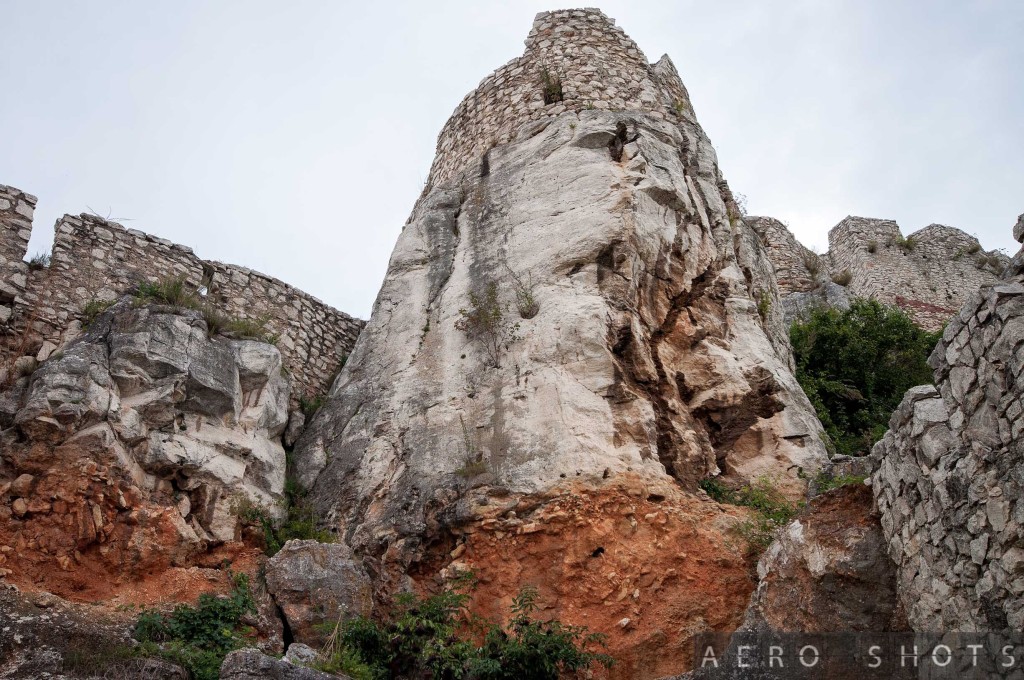
One of the towers displaying serious erosion to its foundation.
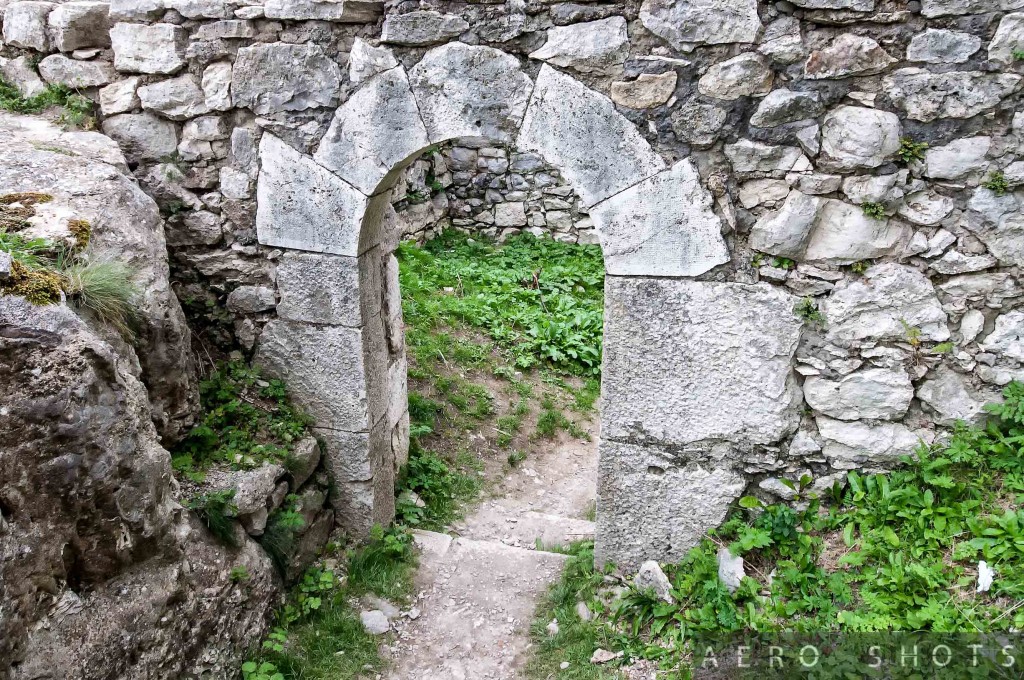
‘Keystones’ have kept this arch in place for hundreds of years…..
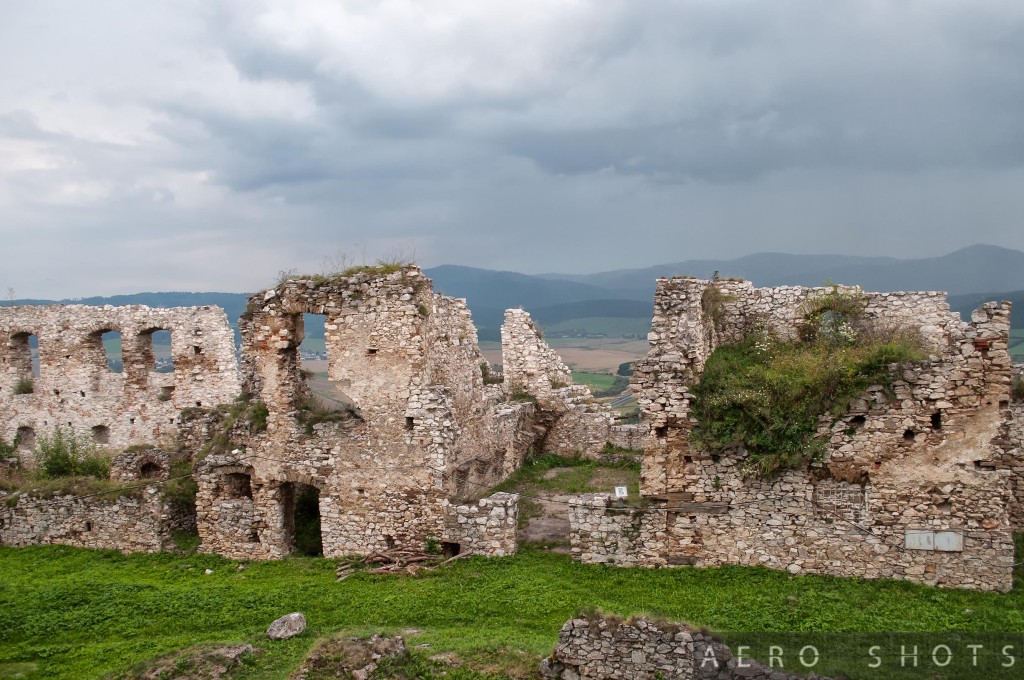
Though much of the Castle has been restored, some areas remain in ruin.
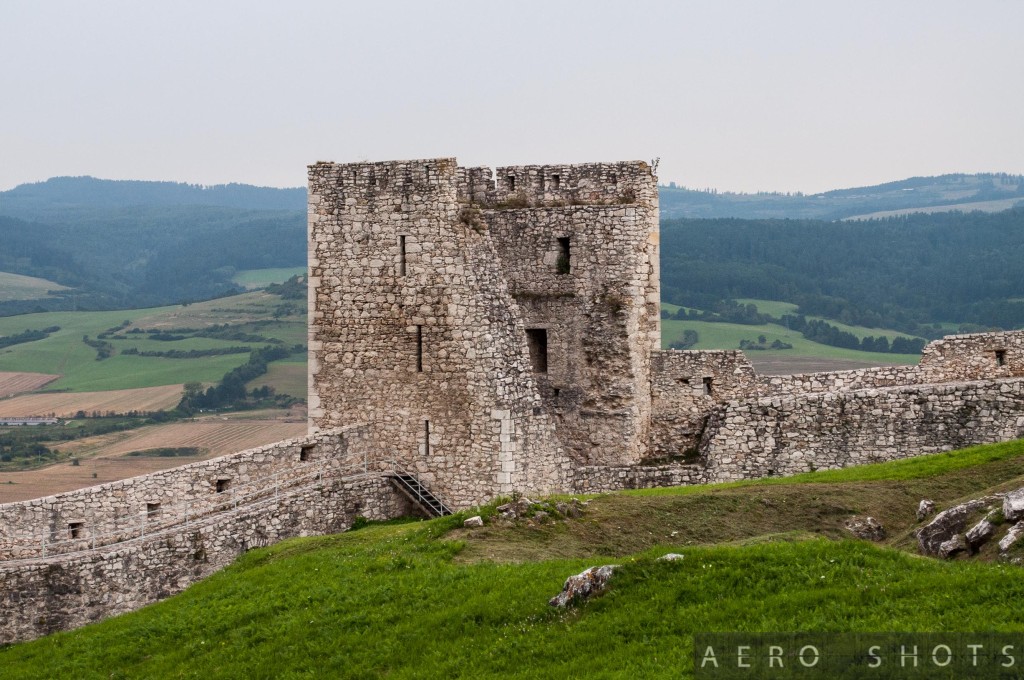
One of the towers overlooking the Castle’s grounds.

There’s definitely a certain beauty to a Castle as it show’s its age and resolve.
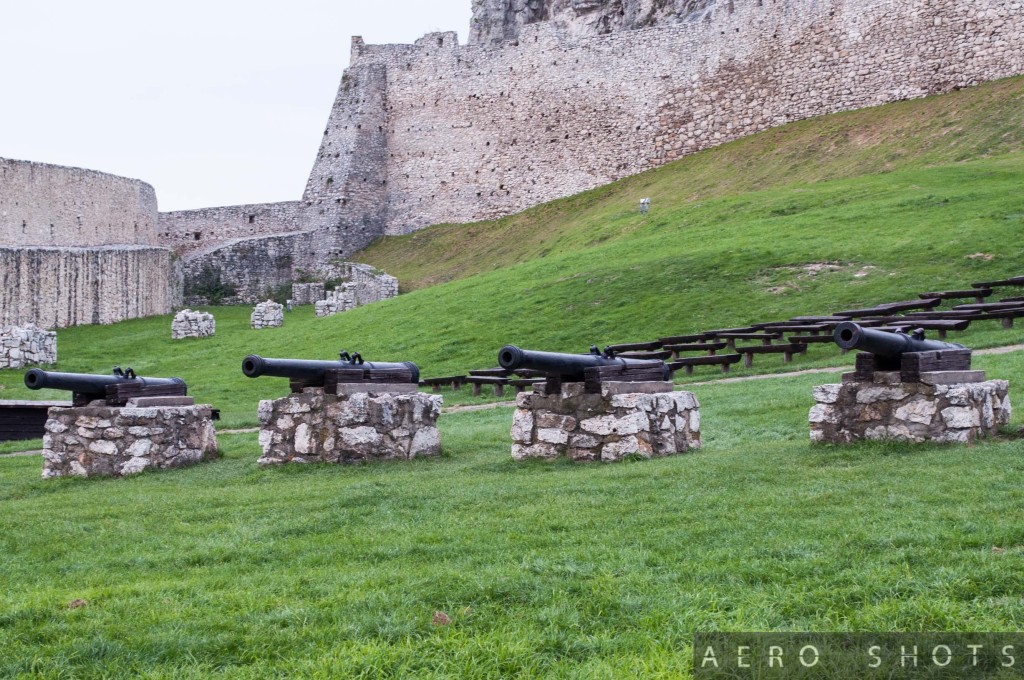
One of several Canon batteries on display
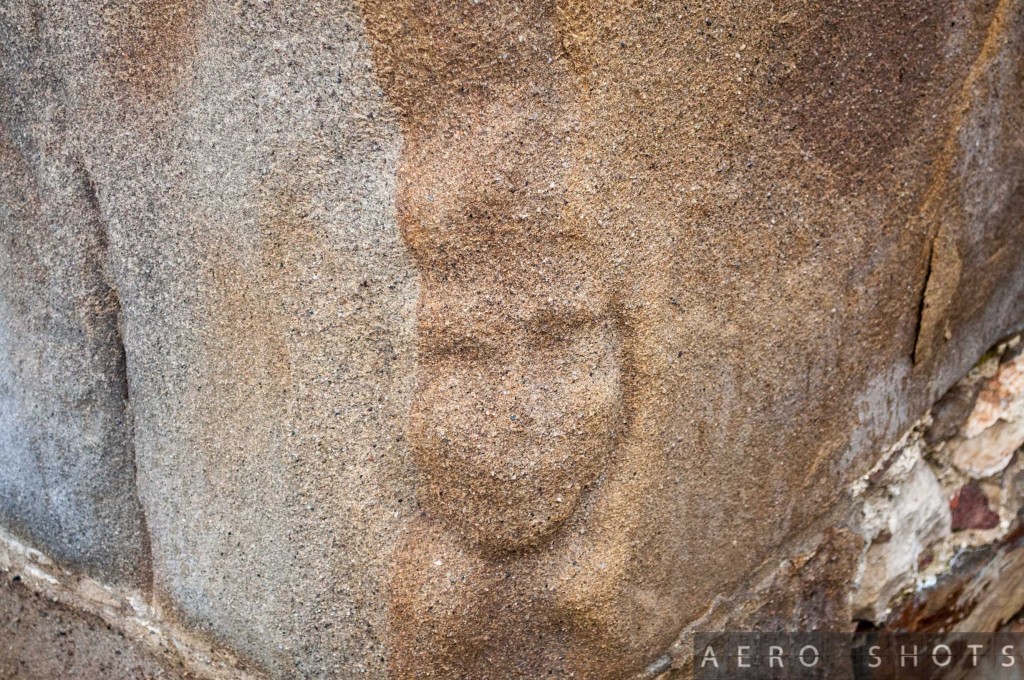
We found this thanks to some insider information. This relief of a young girl is supposedly a tribute to her after she committed suicide at the Castle.
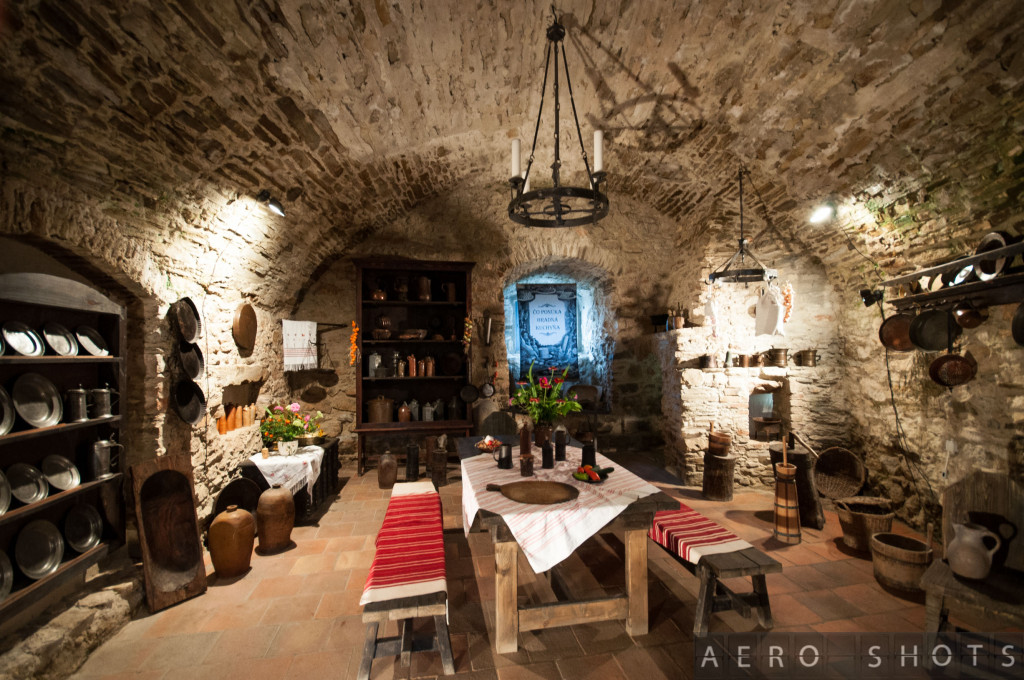
Inside the Castle, several displays recreate what life was like within Castle walls. This shows a typical kitchen.
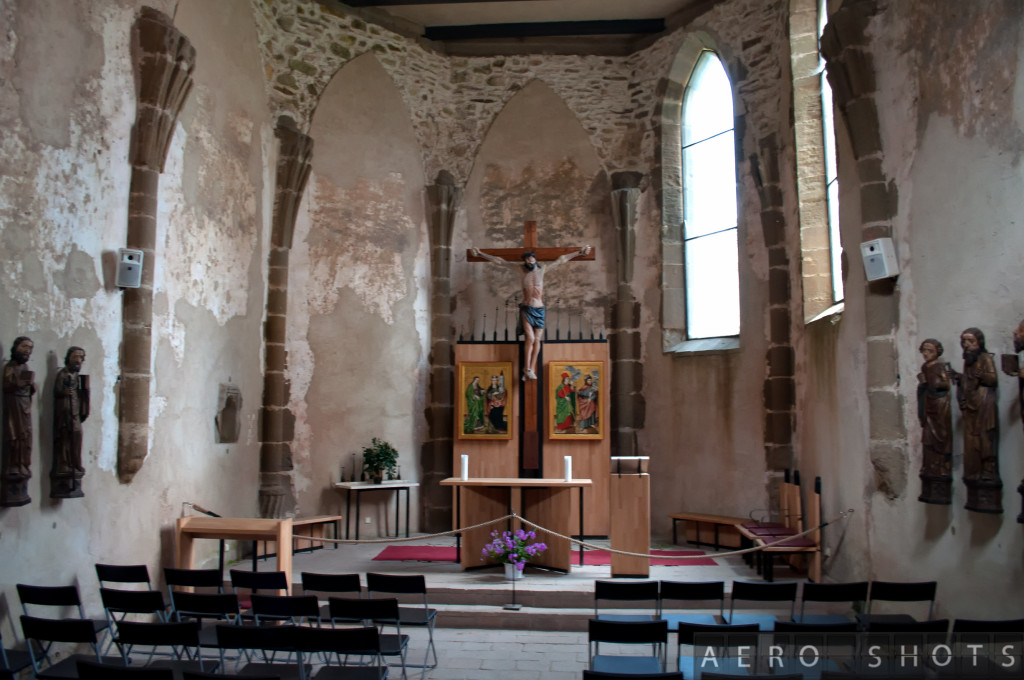
The Castle’s Chapel
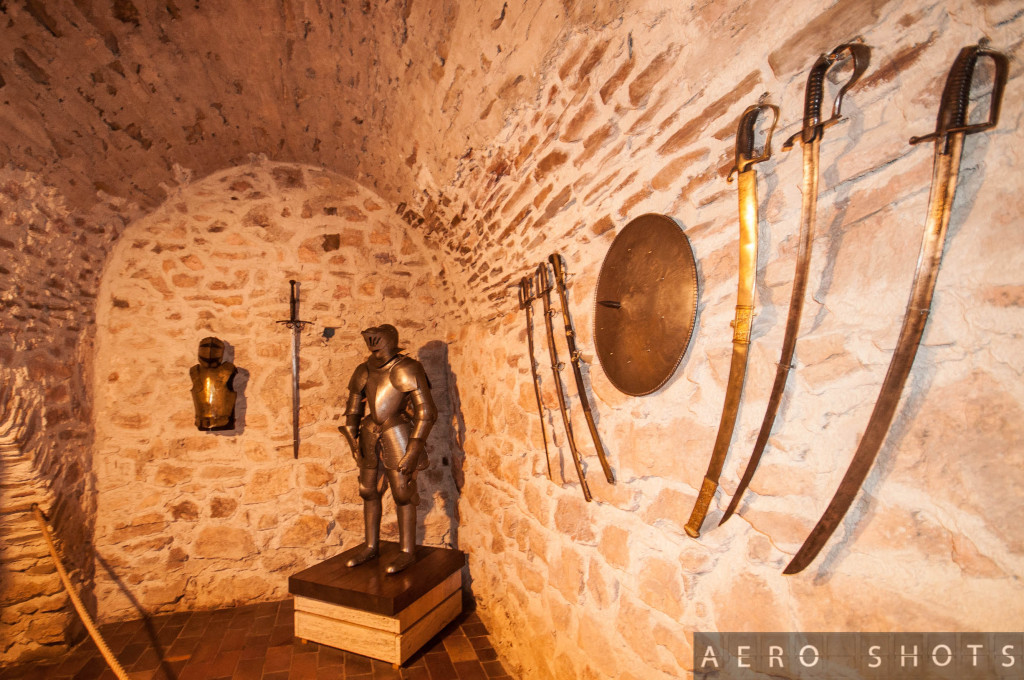
A small display shows some of the arms and suit of armor that were used by Castle inhabitants.
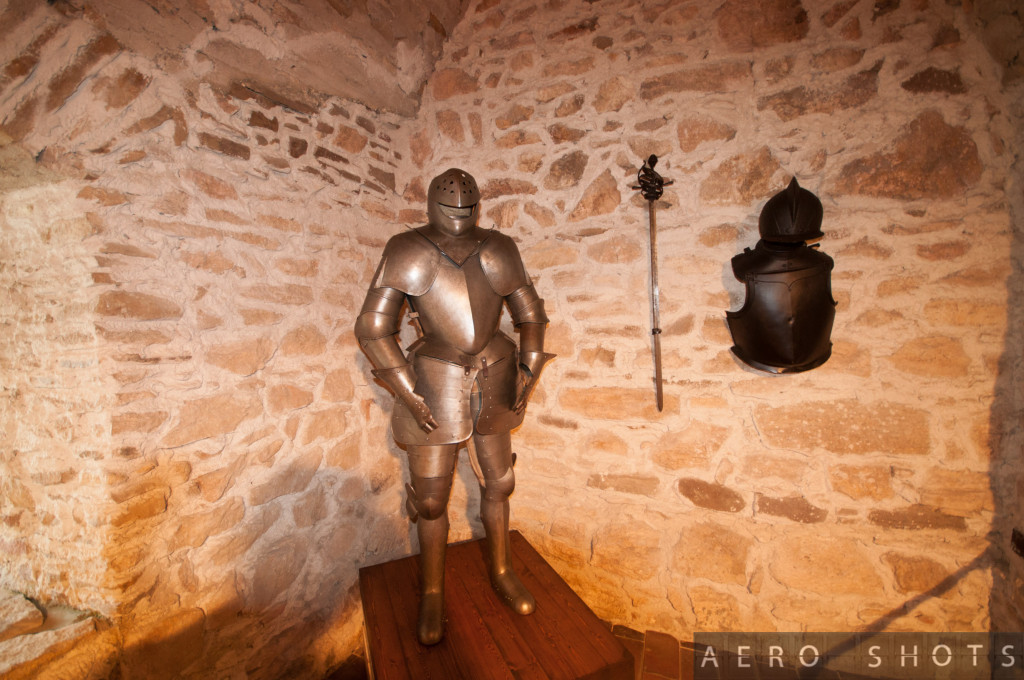
A Knight’s suit of armor
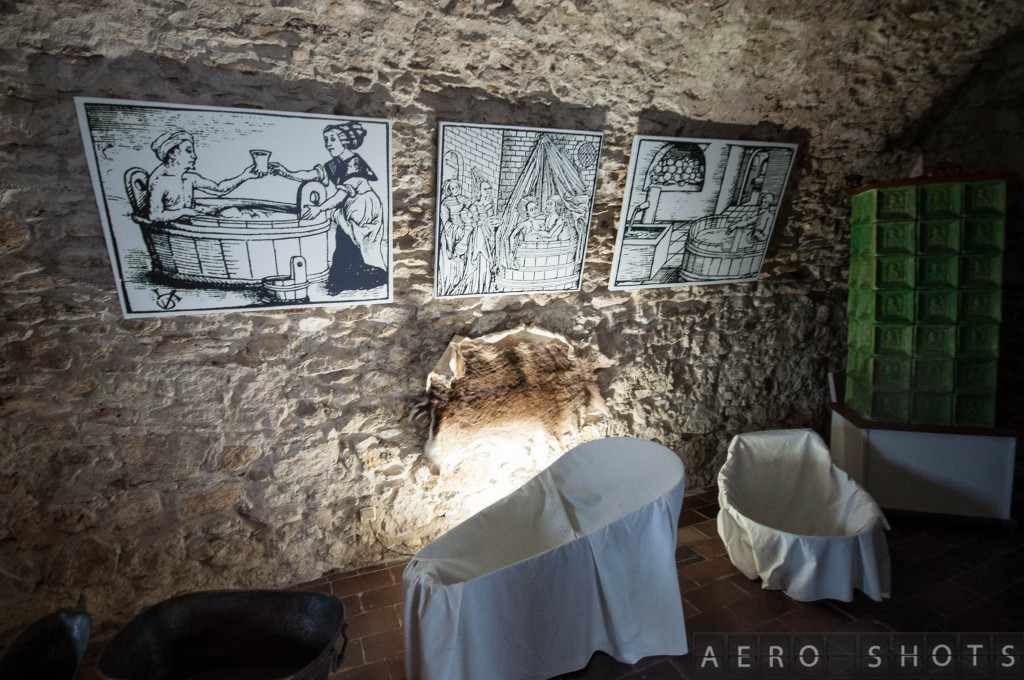
The bath house suggests a variety of services on offer…..given the choice, I think the middle option would be the best value 🙂
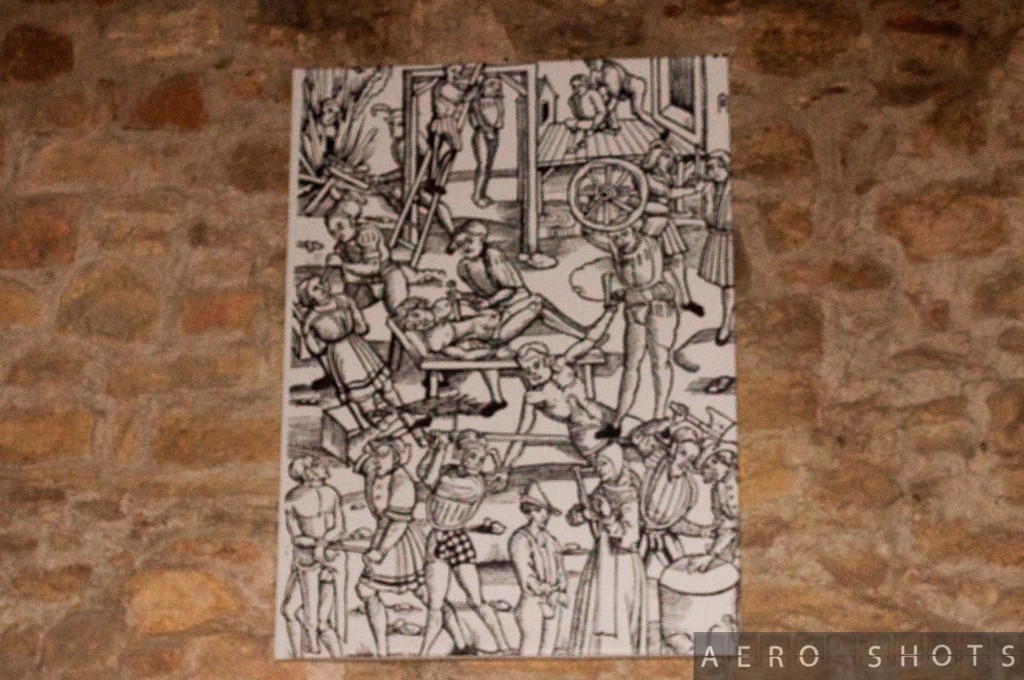
The next stop was the Torture Chamber, apparently a wide variety of services are offered here as well.
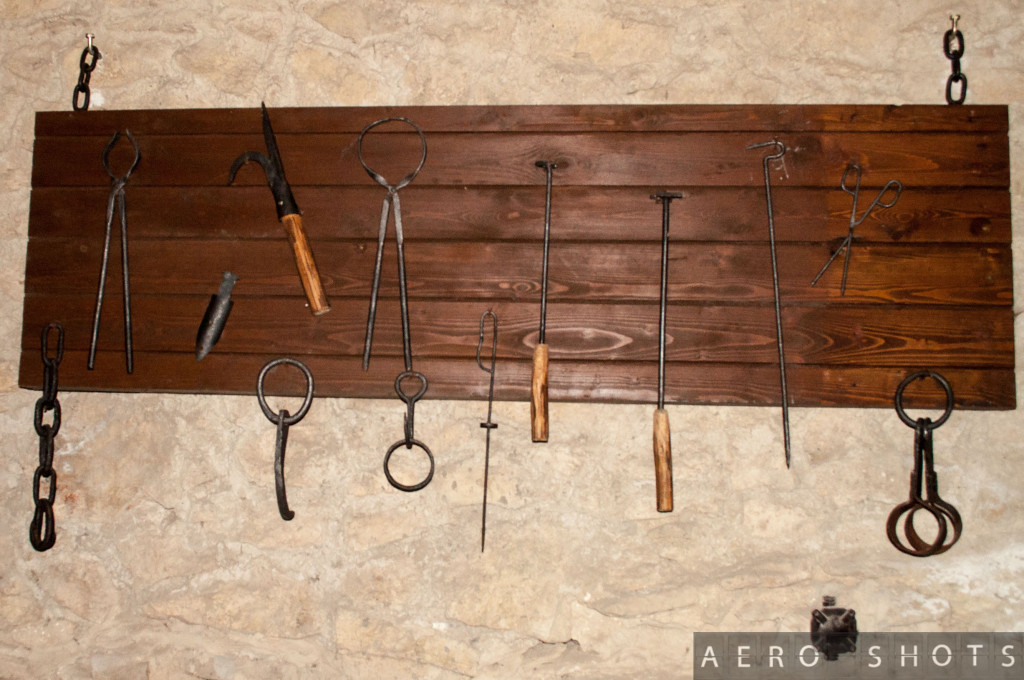
Tools of the Trade…..
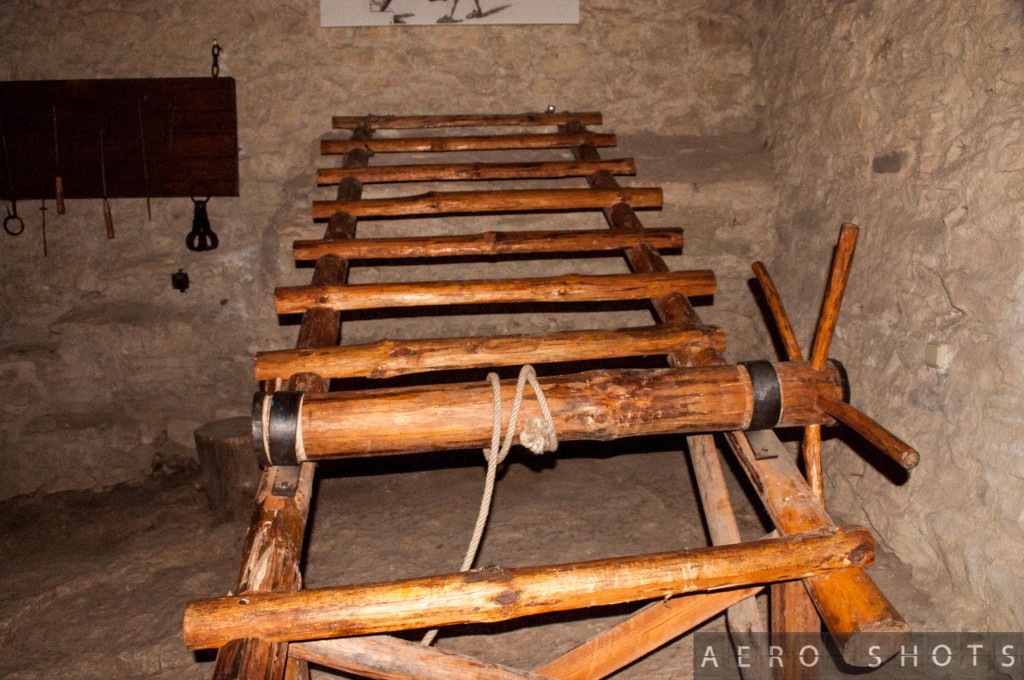
No Castle is complete without a ‘Rack’ that would help you find those extra few inches….
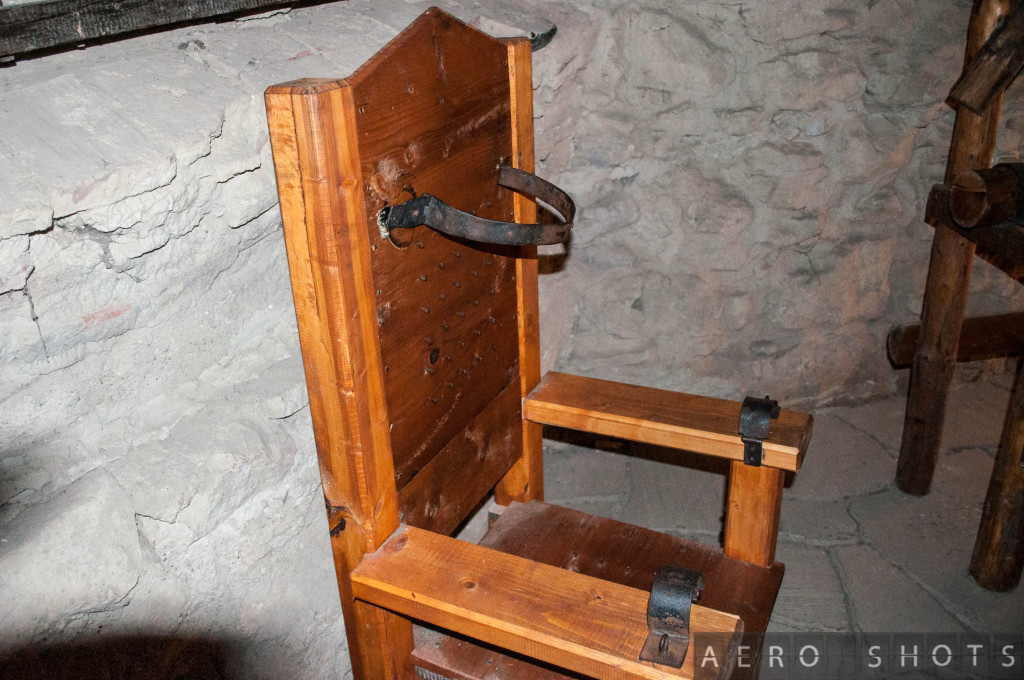
A less than comfortable Nail Chair. Look closely at the seat and seat back and you’ll see little stubs. Behind the seat back is a knob that you would turn to push the stubs into the back and butt of your guest.
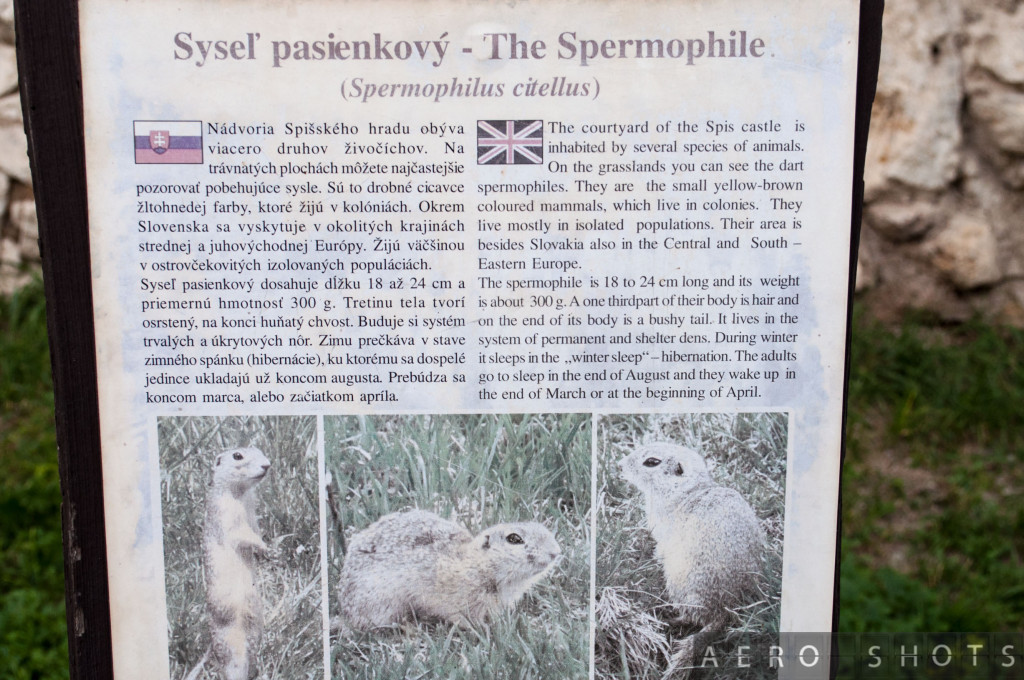
They can’t just called this a squirrel? Why make it so difficult and funny!
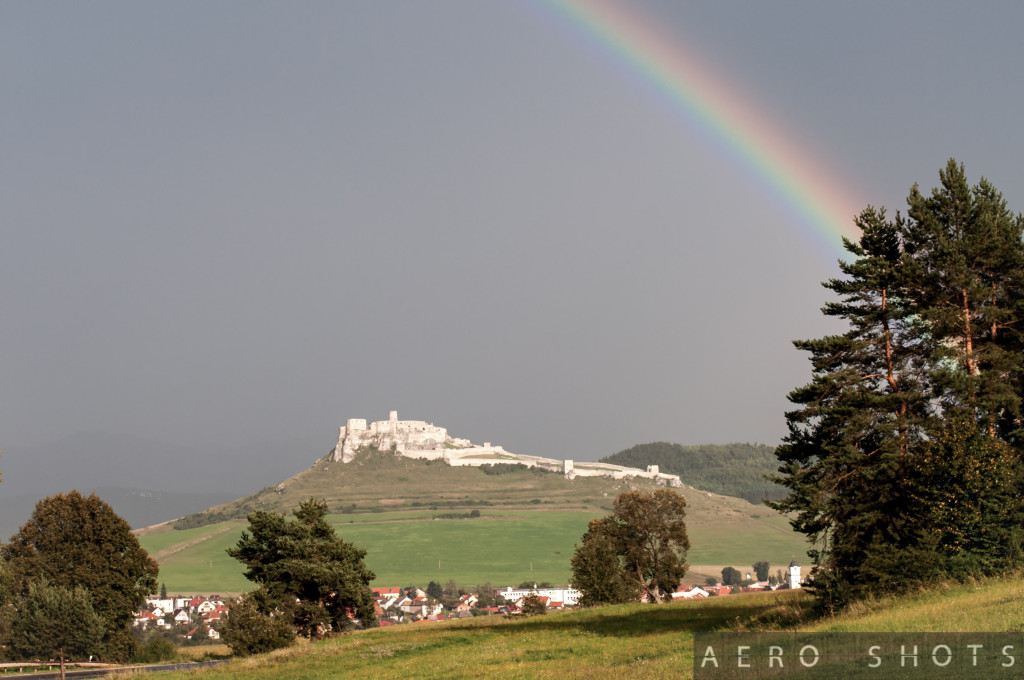
After leaving the castle, we stopped by a restaurant for dinner and enjoyed this spectacular view of the Castle for a few minutes.
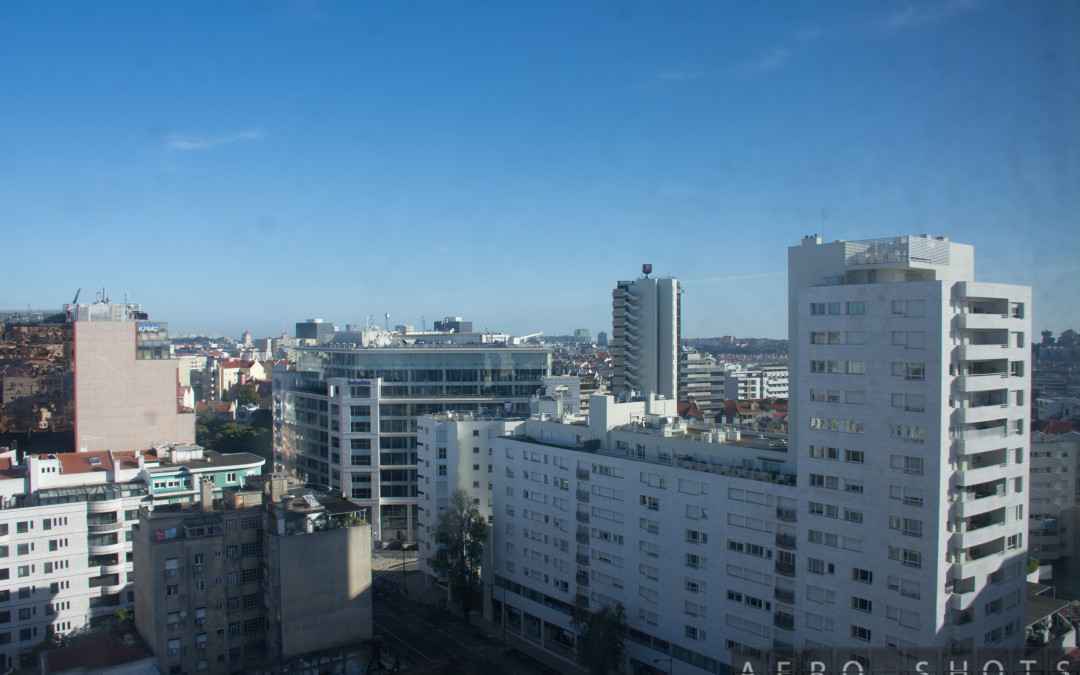
by Lufthansa Flyer | Mar 19, 2014 | Featured, Hotel, Trip Reports |
As a follow up to my recent post regarding my mileage ‘jog’ to Lisbon, I thought I’d share my thoughts on what amounted to a very brief stay with the Sheraton Lisboa Hotel & Spa located near Lisbon’s ‘City Center’.
My main objective for this trip was to get as many ‘P’ & ‘Z’ miles as possible during my 3 day jog to Europe which included 10 segments (on a combo of LH, LX, OS, UA metal) with stops in IAD, FRA (3x), VIE, ZRH (2x), LIS, EWR and finally GRR. My ‘prowess’ for planning even created a nice block of time for Plane Spotting from Zurich’s fantastic observation platform.
I wasn’t nearly as concerned about hotel rooms on this trip since I would only be in Frankfurt for 2 nights and Lisbon for 1. I settled on the Sheraton due to proximity to both airport and city as well as on the recommendation of someone who has visited the property.

This scene was waiting for me as I exited the terminal. If you look closely, you can see that the rainbow ‘spilled’ its colors into the flags……I didn’t realize how perfect this photo could have been at the time. Unfortunately some of the street signs got in the way.
I landed in Lisbon at approximately 2pm and was at the hotel by 3pm. Lisbon has a very efficient subway system with a station at the airport which made it very easy to reach the hotel. In fact, the hotel was only a 15 minute walk from the train station and could have been shorter except for the fact that I got off of the train 1 stop too early.
The staff at check-in was welcoming and offered to acclimate me to the property and amenities. Being that I was in a hurry to see Lisbon since I was leaving early the next morning, I politely declined the offer but asked about what I can see and experience in 6 hours in the city. The check-in agent pulled out a map and proceeded to circle all of her favorite places in areas that were easy to reach and would give me a taste of Lisbon. Her recommendation revolved around the Baixa District, which I wrote about in a previous post. It turned out to be a fantastic tip.
Anywho, back to the room review………yes, anywho.
Being that I do not have any significant status with Sheraton, I was not expecting any type of an upgrade, etc. but thats OK, the room that I was given was more than suitable and had perhaps one of the more interesting bathrooms that I’ve seen in a typical non-suite hotel room.
The hotel room was spacious for European standards. Even with a king-sized bed I had plenty of room and was not tripping over myself or my luggage. The room was appointed in rich, dark colors which made it feel cozy and warm, without ‘shrinking’ it. The room’s furnishings were in excellent condition with the room showing very little wear. After settling in and with the room as comfortable as it was, it would have been easy to skip an afternoon of sightseeing and to take a nap instead. I had to battle through the temptation.
Enough said…..here are a few photos that I took that I think captured the essence of the room and should give you a good idea as to what you can expect should you stay at the property (after seeing them however, I should just stick to plane spotting!). Considering its location and reasonable pricing, I would easily recommend the property to anyone planning on a visit to ‘LIS’.
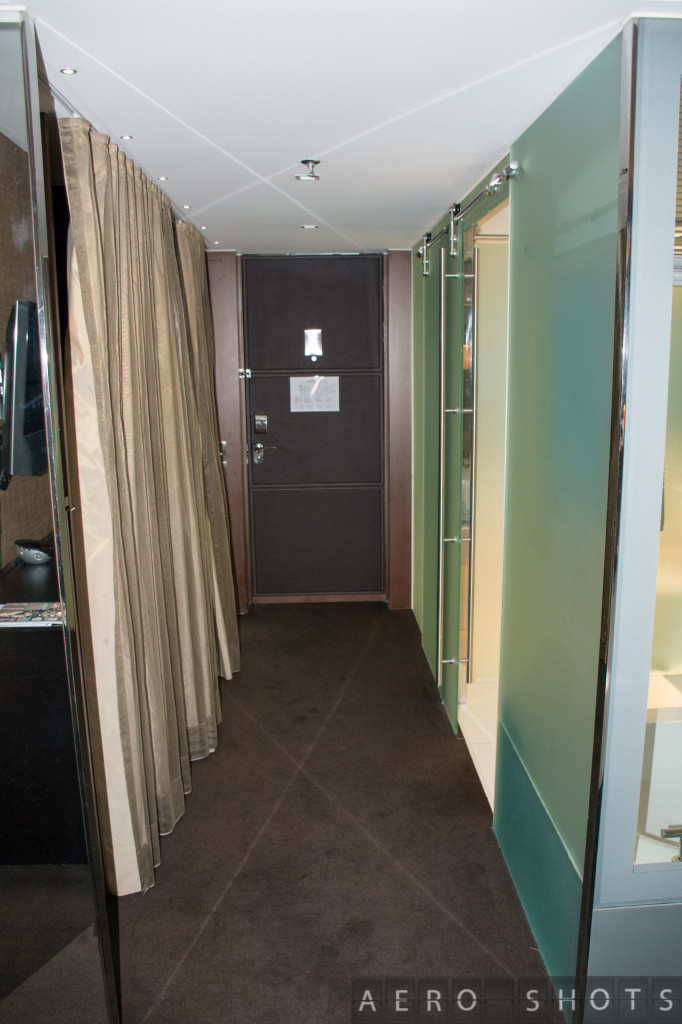
Looking back to the entry way. Closets are to the left, bathroom is on the right. The ‘X’ on the ceiling and floor are side effects from the camera’s flash.

A VERY comfortable king-sized bed. I slept like a baby.
As I mentioned early, the bathroom was the unique feature. One of the walls was glass which gave a very clear view of the bath from the bedroom. Privacy could be achieved with the blinds but if you are sharing a room with a non-significant other, a lot of steps need to take place to ensure privacy! If I had to guess, I would submit that this glass wall is designed to make the room look bigger. A solid wall would give the room a claustrophobic feel.
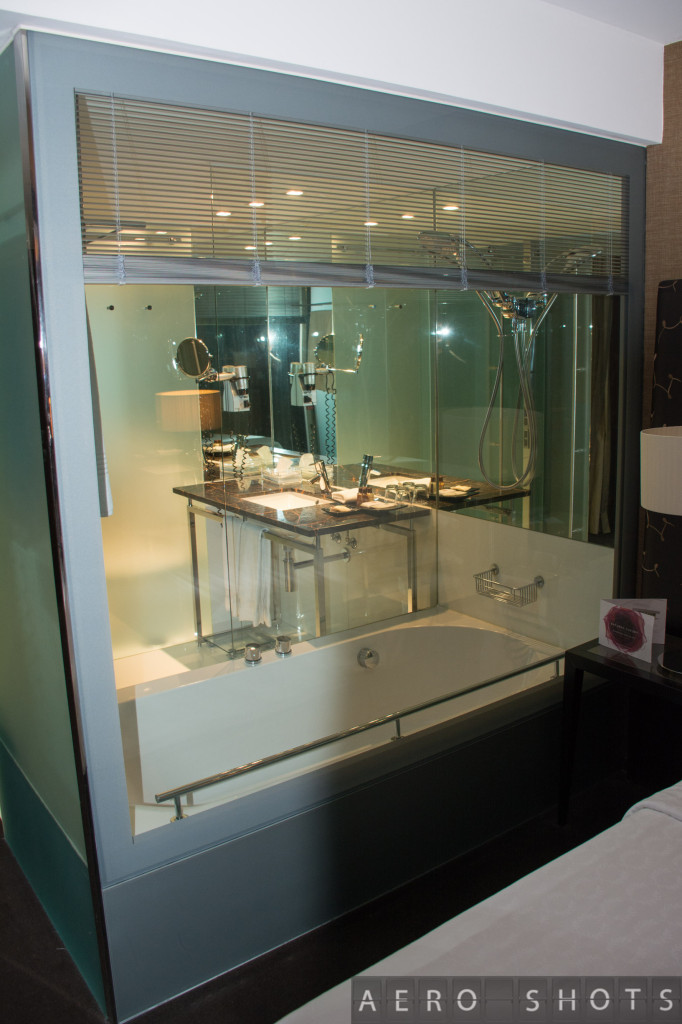
Other than the ‘unique’ glass wall feature, the bathroom was outstanding. Spotless, roomy and full of useful amenities. Though I was not a big fan of the large mirror in the shower….Scary and sobering…..I had to turn the other way! 🙂
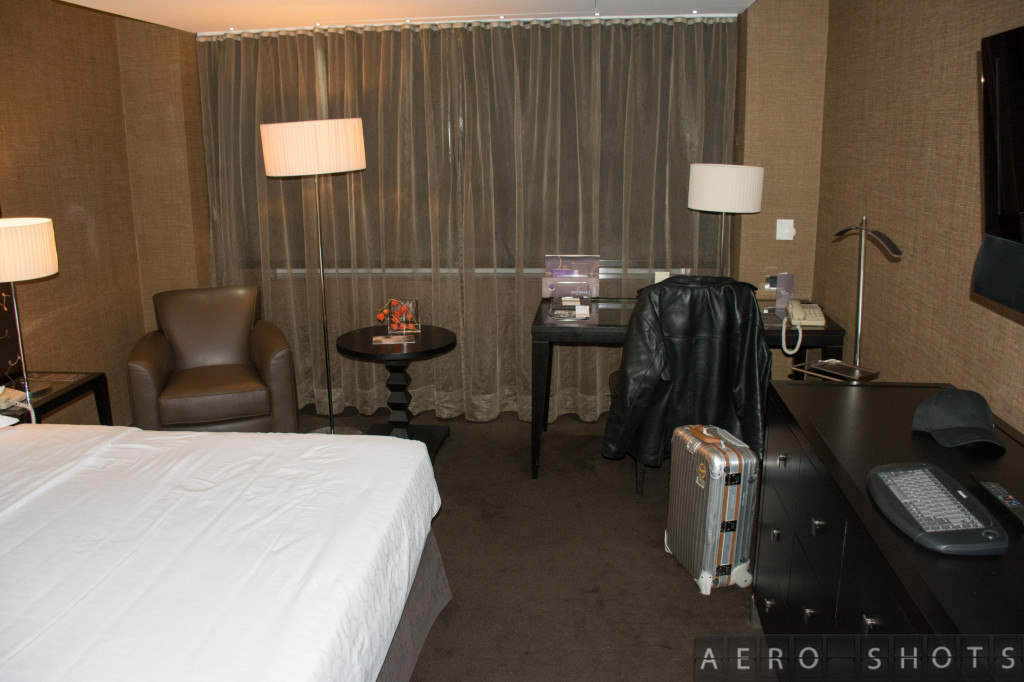
Looking the other way into the room, you’ll find standard room features including desk, chair, dresser, flat-screen TV etc. The shades are drawn to eliminate glare from the sunshine. The shades are powered, making it easy to adjust settings without fumbling with cords, etc.
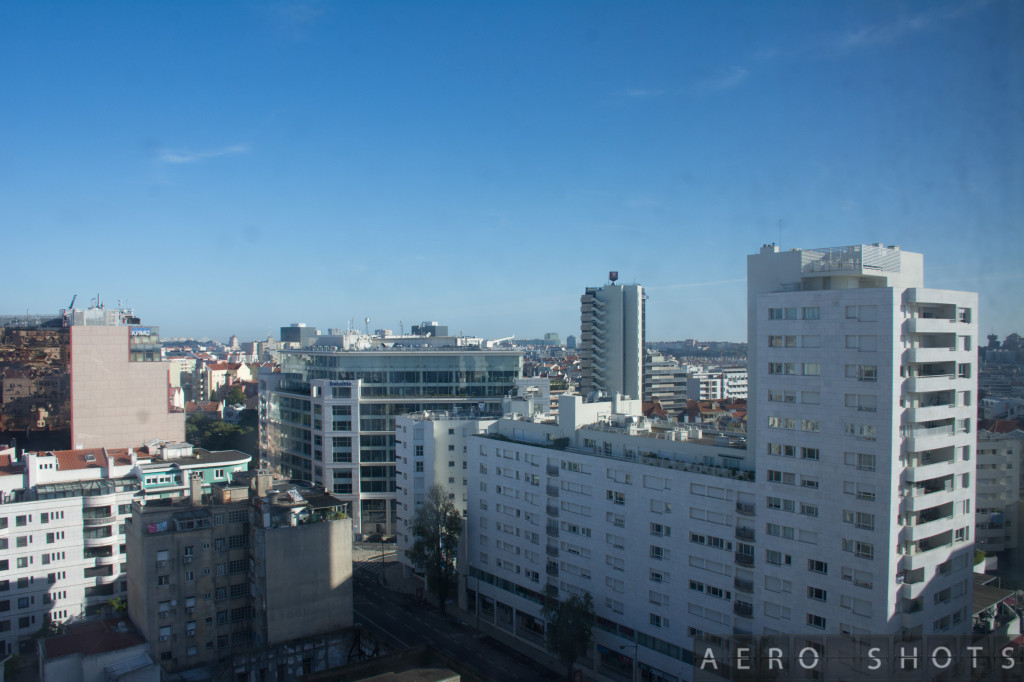
Decent views of Lisbon from the upper floor room. Having just rained, the window was spotted….sorry!
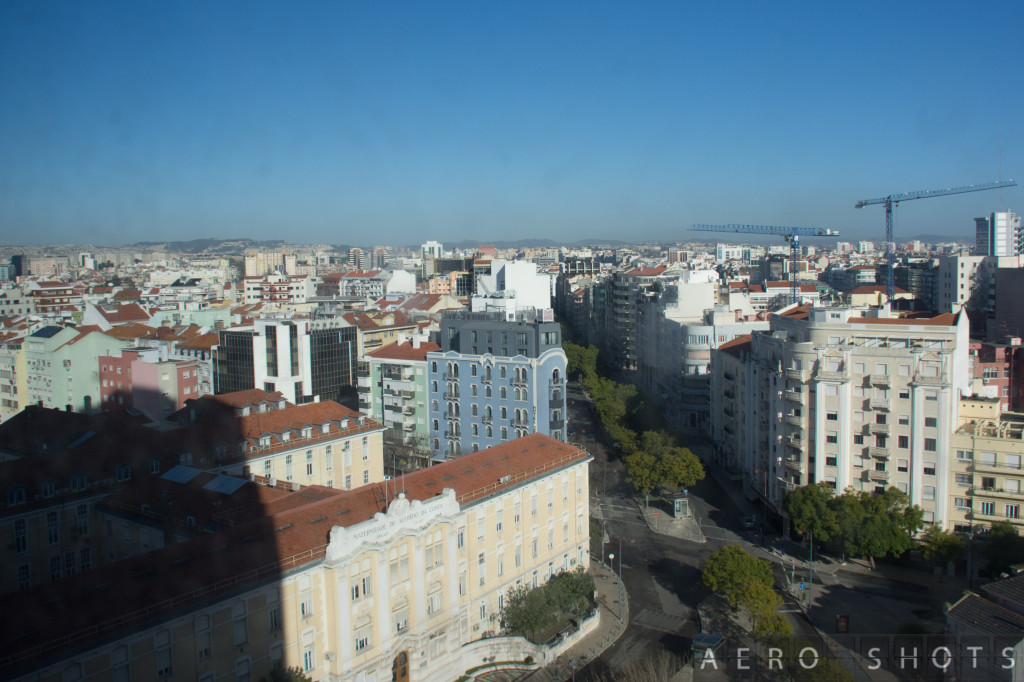
Aother view of Lisbon looking to a different direction.
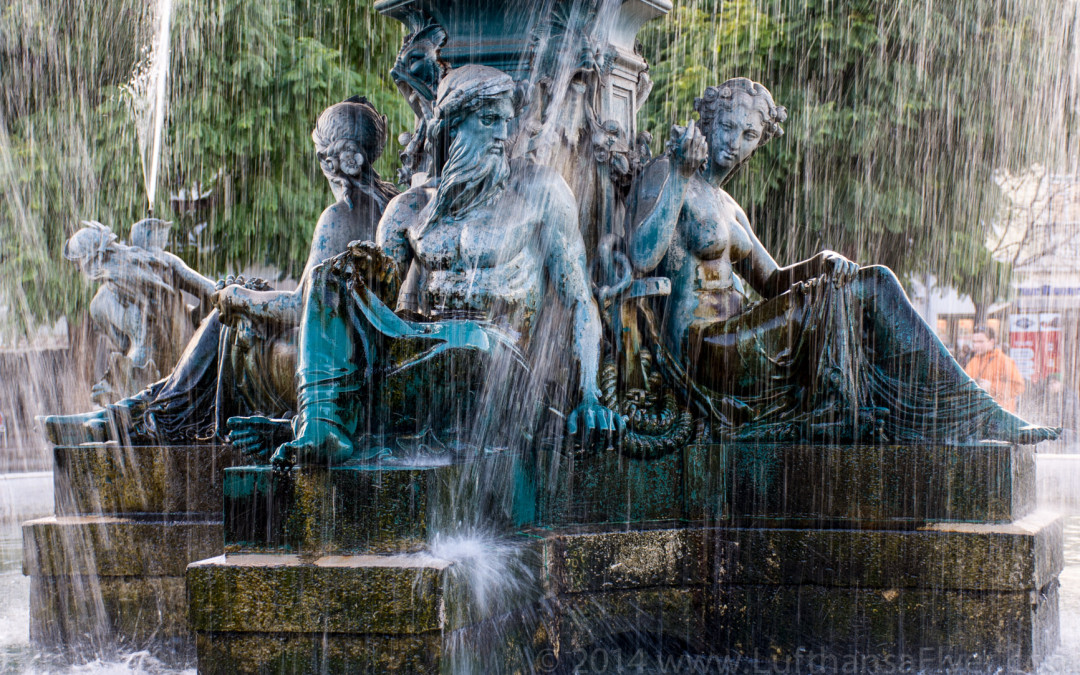
by Lufthansa Flyer | Mar 15, 2014 | Featured, Trip Reports |
As part of a last minute 3 day mileage ‘jog’ last year (literally returning home on December 31) that included 3 stops in Frankfurt, 1 stop in Vienna, 2 stops in Zurich and one in Lisbon, I had the opportunity to see a small part of Lisbon for the first time. Guess which airlines I flew 😉 …….
By the time I arrived from Frankfurt (via Zurich) it was already mid-afternoon and any sight-seeing would need to happen quickly.
The friendly check-in agent at the Sheraton Lisboa suggested I visit Lisbon’s Baixa district because of its proximity to the hotel (10 minutes by taxi) and the fact that it is lined with many narrow streets full of architecture, shopping and food. Having only a few hours, I took her up on the advice since there would be a lot to see in a relatively small area.
Baixa certainly contains a high concentration of things to see and do. Shops line each of the 8 streets that make up the core of the district. Around the periphery exists a number large plazas with ornate architecture, fountains and scupltures that are worthy of their own ‘trip reports’. Even the streets are cobbled in a variety of beautiful patterns consisting of black and white bricks which makes them as much as an attraction as any building. Considering that Lisbon was leveled during an earthquake in 1755, it shows no worse for the wear after its reconstruction.
Having only a few hours, I did not do much browsing in order to take in as much of the area as possible and I did not finish my ‘power tour’ until nearly midnight. I was fortunate in that most of the streets surrounding the area were blocked off to traffic because of a marathon which made getting around the area that much easier.
Following are some of my favorite highlights of the Baixa neighborhood which hopefully gives you a taste of what the area offers. It’s certainly worth visiting and on my list of places to return and spend more time discovering.
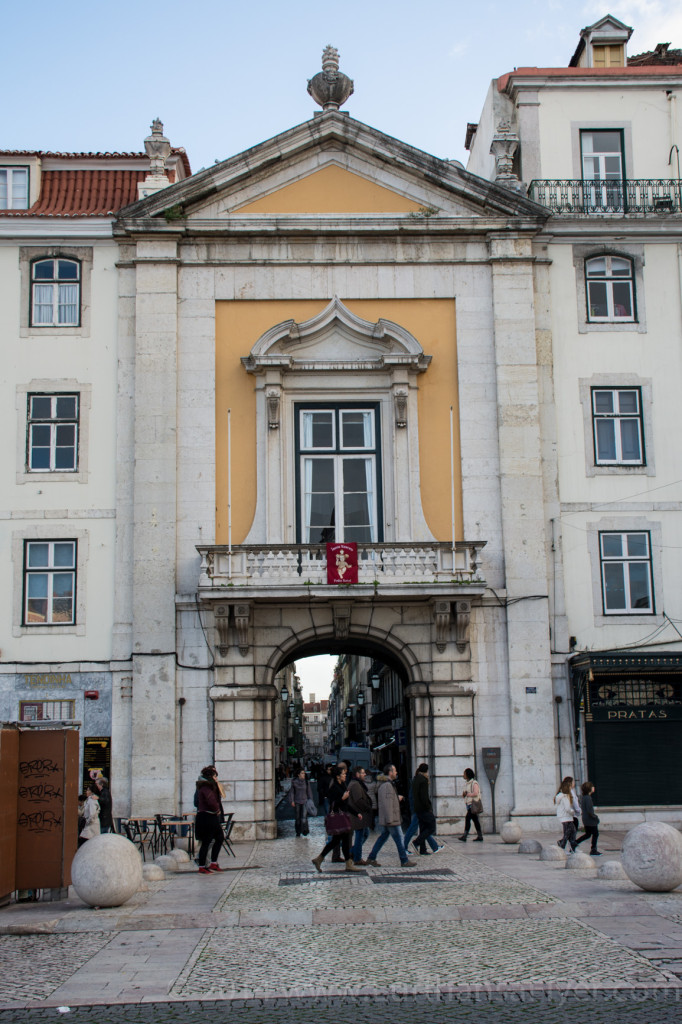
One of the ancient gateways leading to the Baixa district.
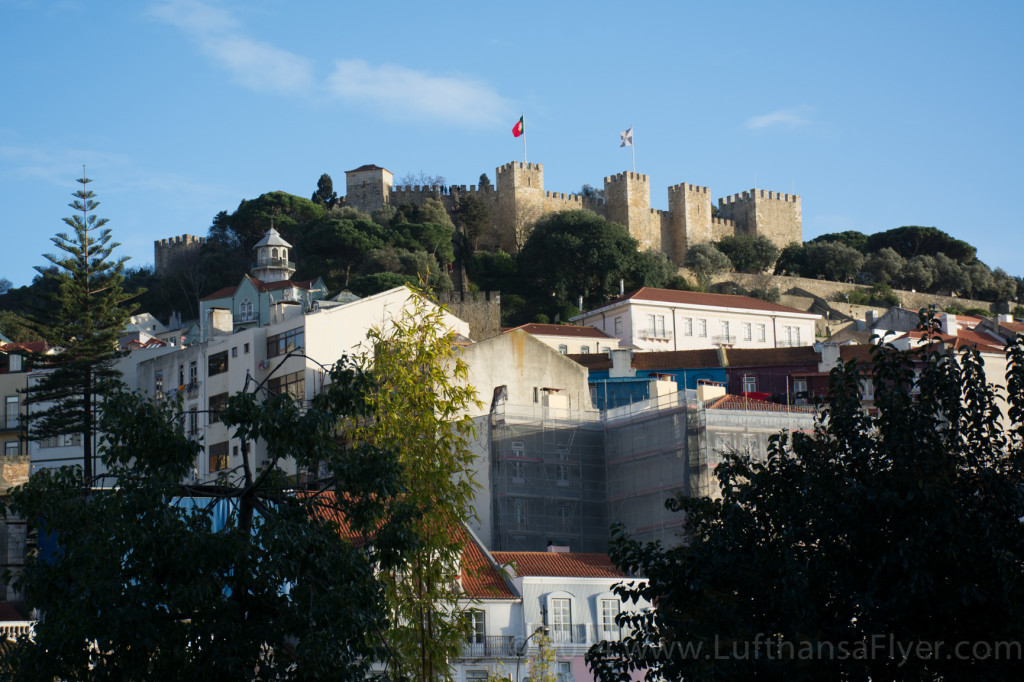
The Castelo de Sao Jorge overlooks Baixa.
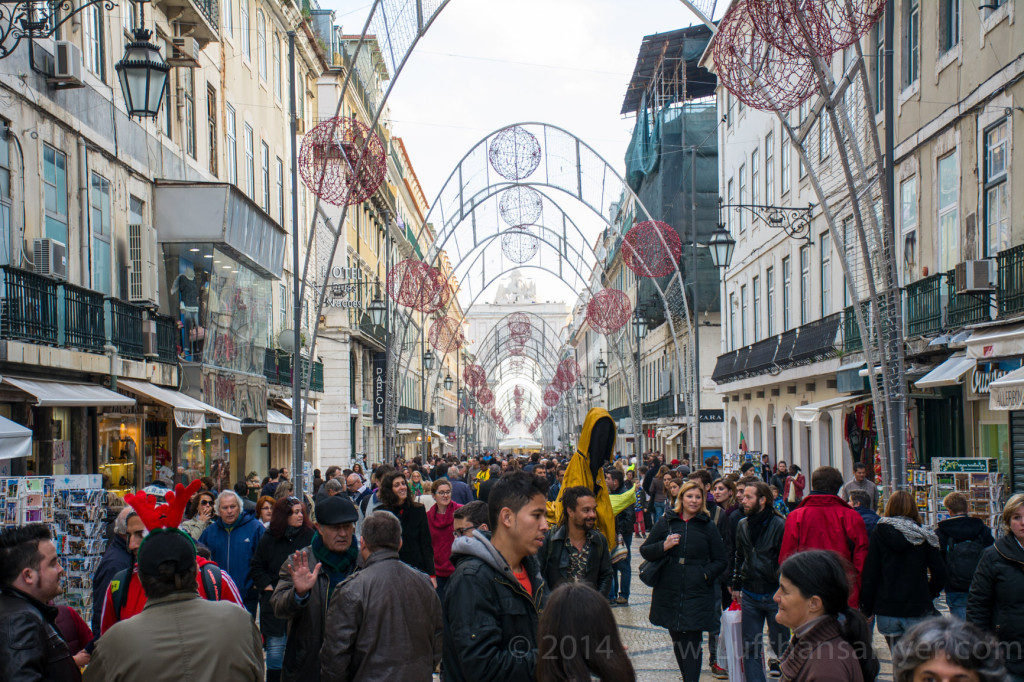
One of the 8 pedestrian lanes that make up the district. Full of shopping and restaurants. Suggestion: Make sure to buy a Cork souvenir – it is one of the things that Portugal is known for.
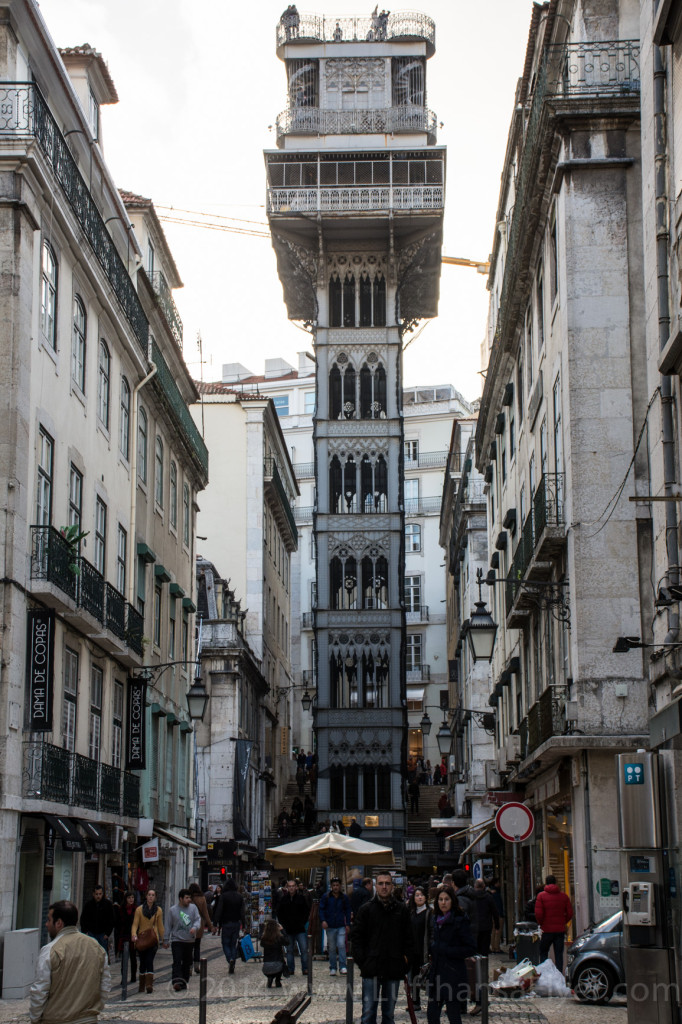
A popular attraction, the Elevador de Santa Justa gives you opportunity to take in views above Baixa.
To the south of Baixa is the Praca de Comercio (Plaza of Commerce) which is a large open area for the public to enjoy. It sits on Tagus river and affords fanastic views out towards the Atlantic to the east.
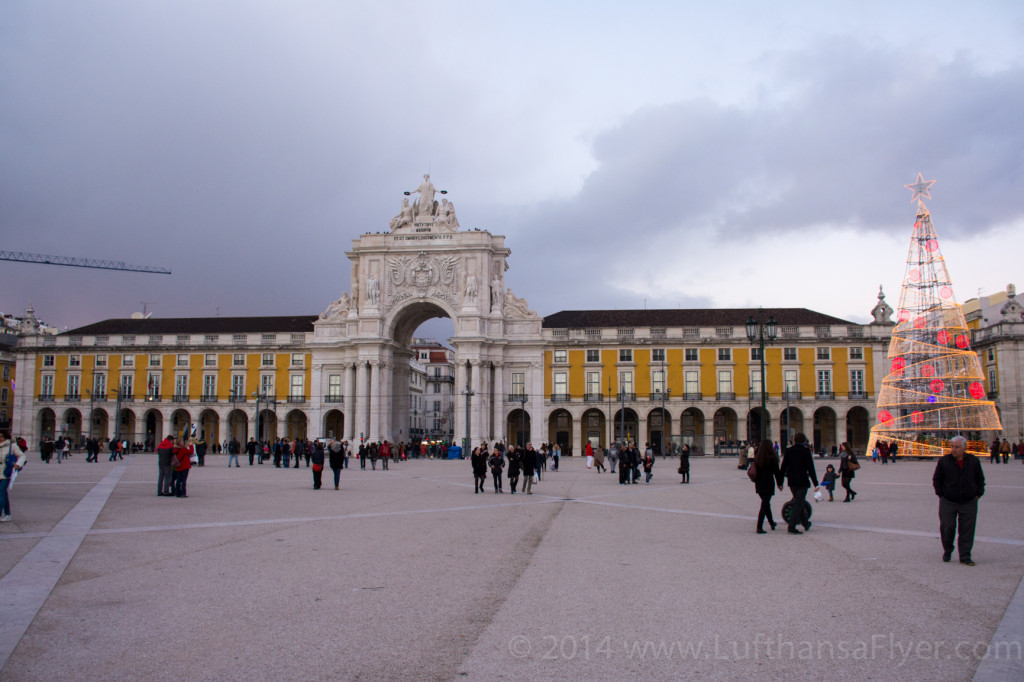
Housed in here is the Courthouse and Ministry of Justice. The Arco da Rua Augusta spans the two buildings.
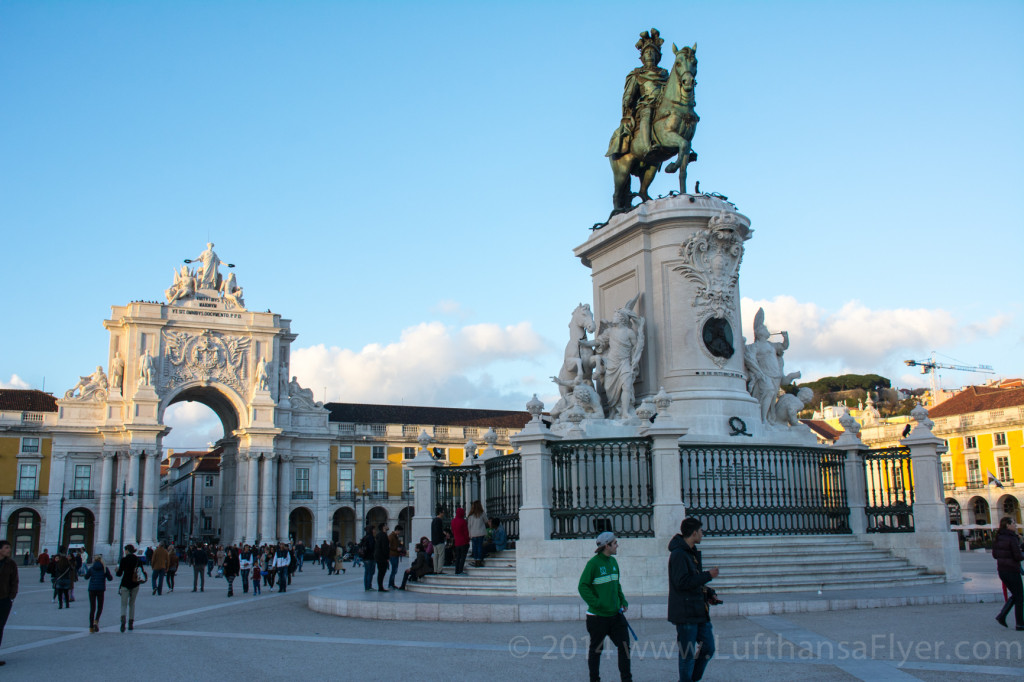
There is no shortage of monuments celebrating Portugal’s heroes.
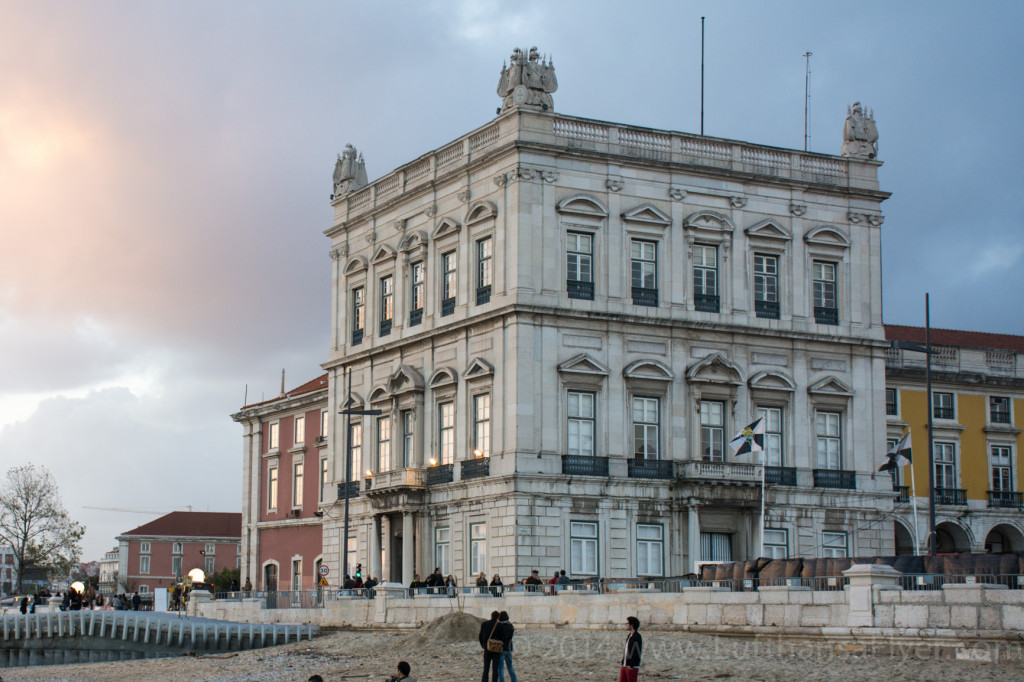
An example of Lisbon’s beautiful architecture.
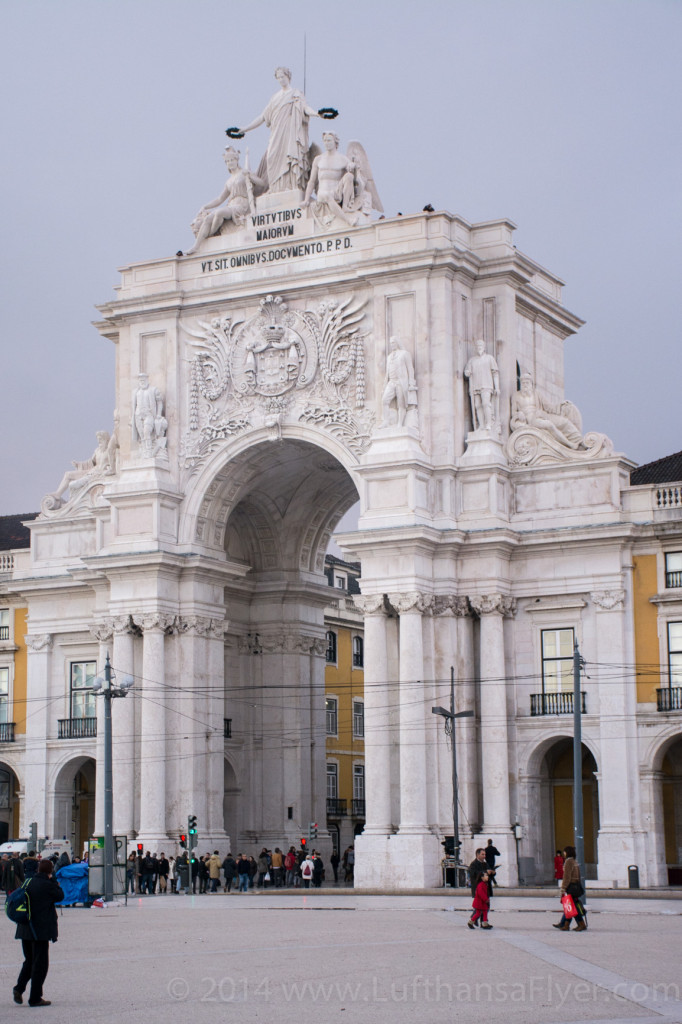
A closer look at the Arco da Rua Augusta.
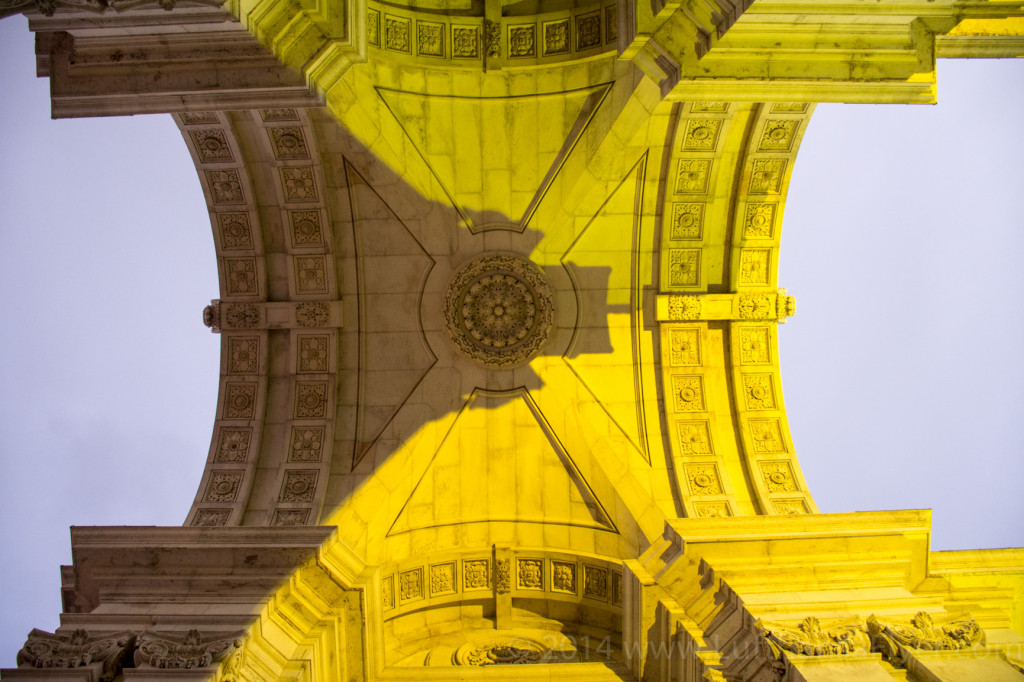
Beneath the ‘Arco’ as the sun begins to set – Creating a dramatic effect.
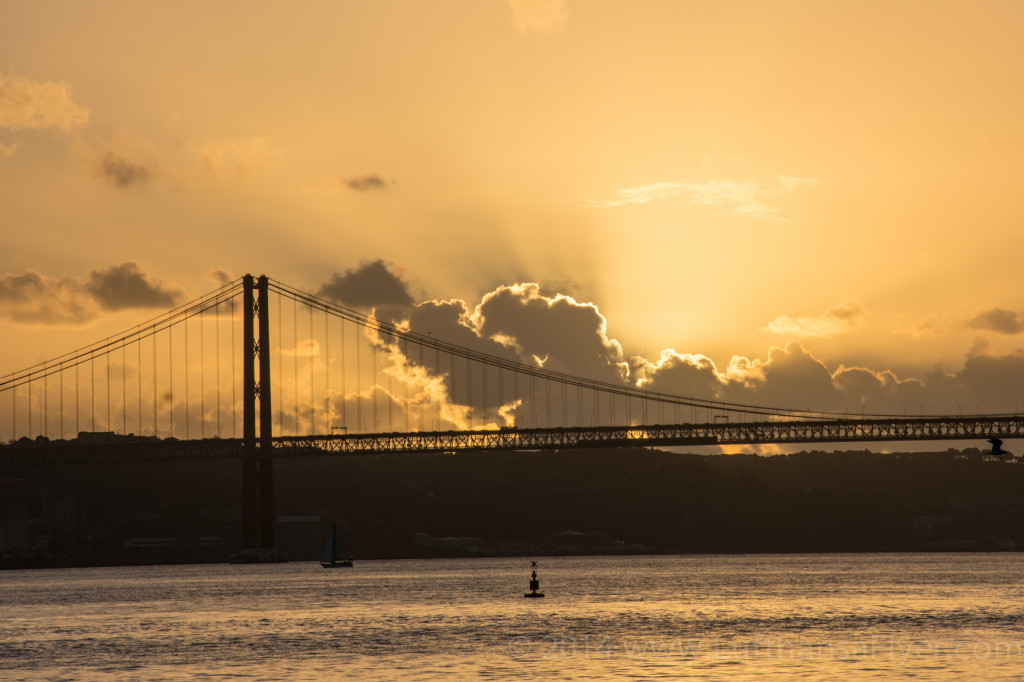
Photos could not do the sunset any justice. The ’25th of April’ bridge helps create additional effect.
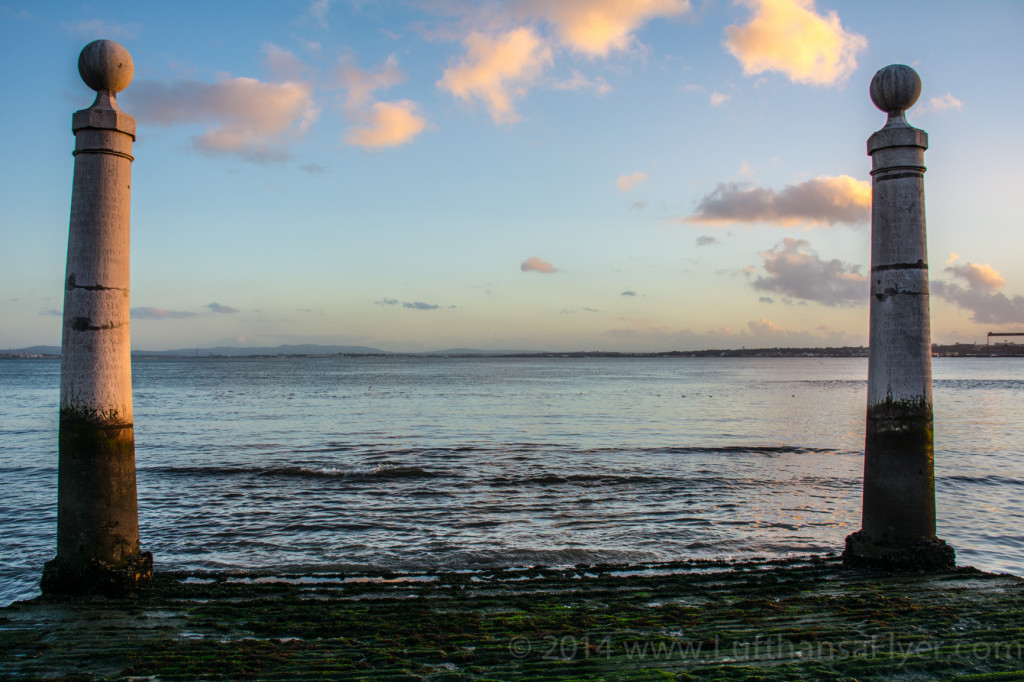
Two Ancient Colonnades frame the Tagus River. My guess is that this was a docking point for boats. Several old hooks in ground suggest that they were mooring points for the boats.
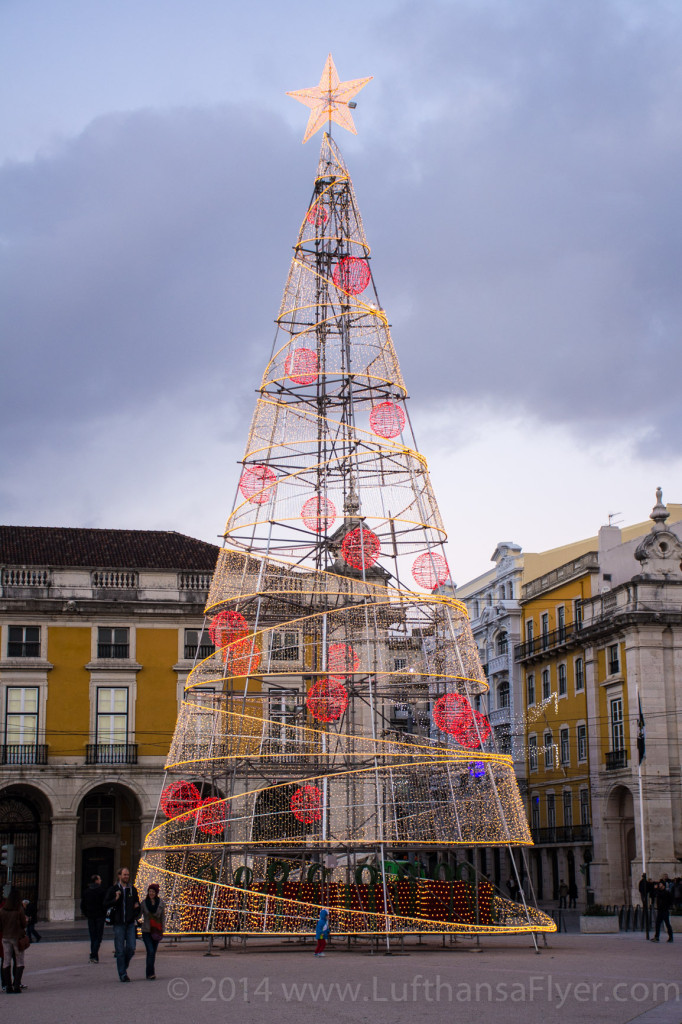
The Christmas Spirit was still evident on December 30!
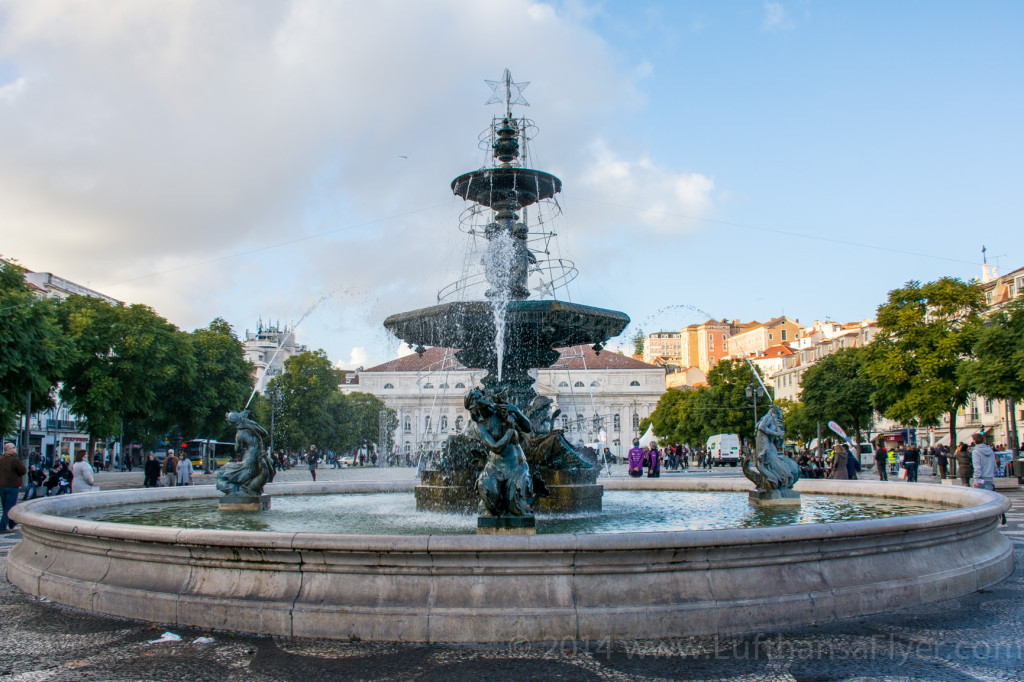
This fountain was one of my favorite pieces in the area. It is the main highlight in the Praca Dom Pedro (Plaza of Dom Pedro).

I spent some time perfecting a long shutter exposure without a tripod…..
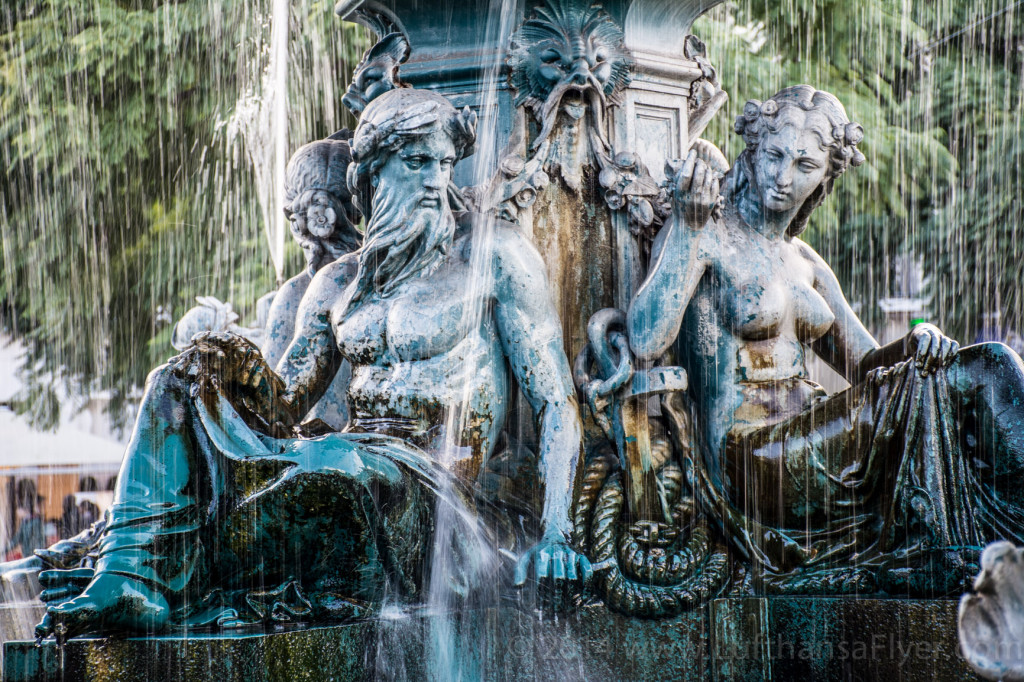
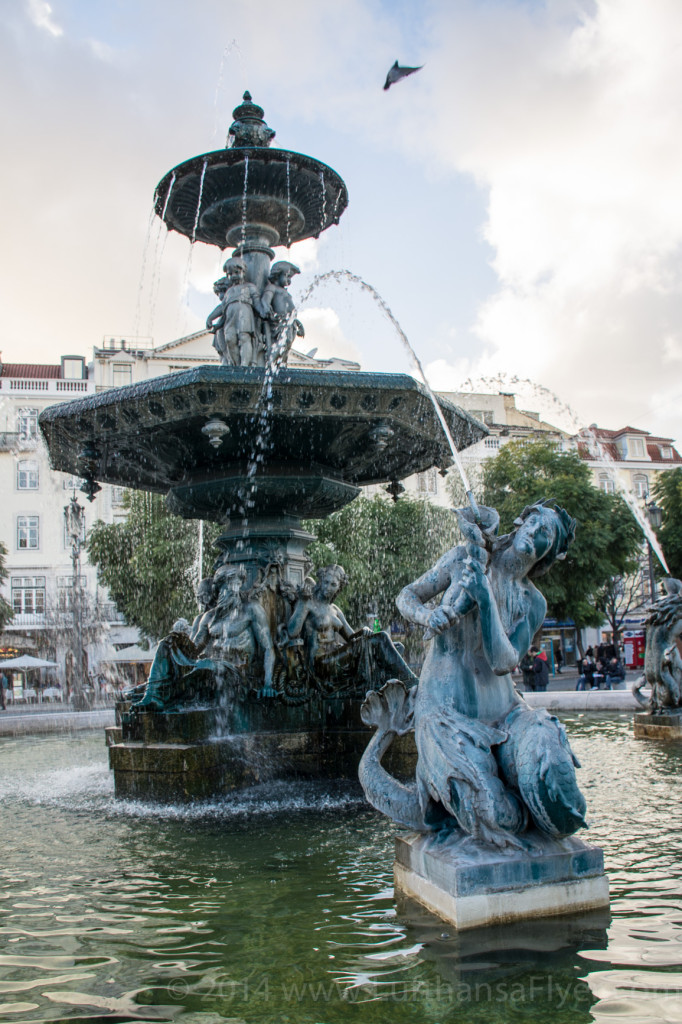
As the sun set, festive lights kept the neighborhood bright and festive. Even a brief thunderstorm had no impact on dampening the mood. Add a night-time marathon to the mix and Baixa was buzzing with activity.
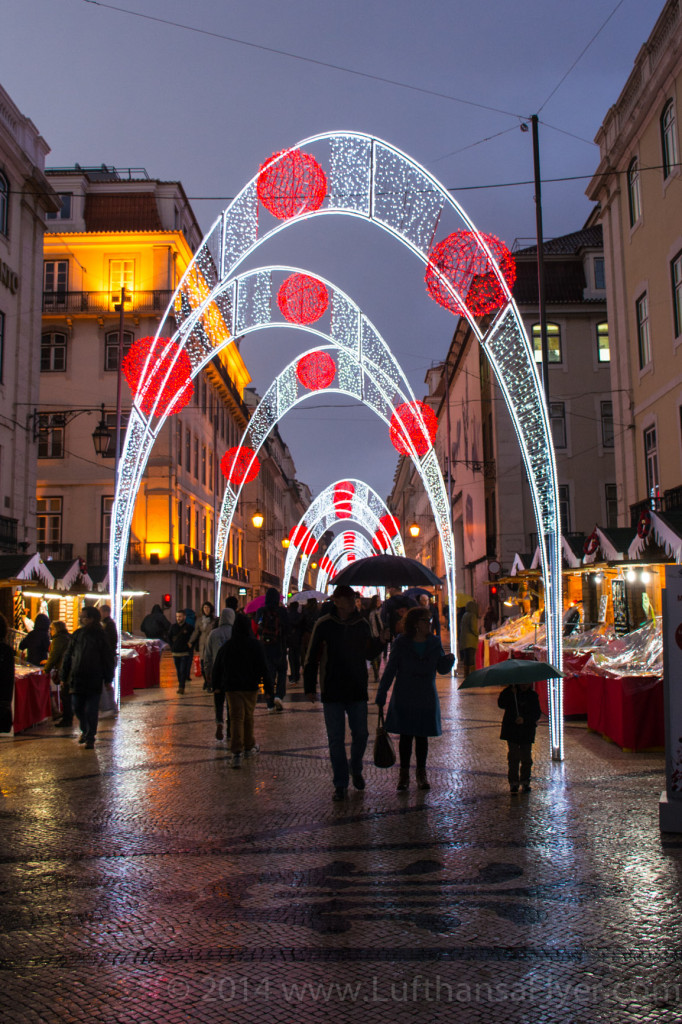
Each lane was lit up with a unique Holiday light arrangement. Notice the ornate cobble stoned street?
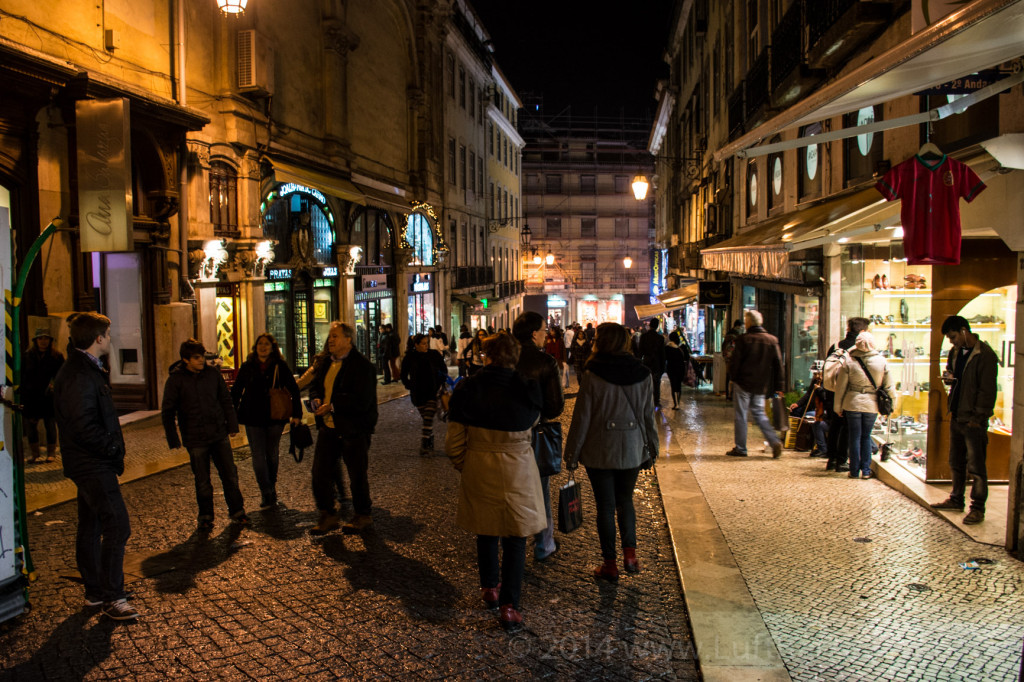
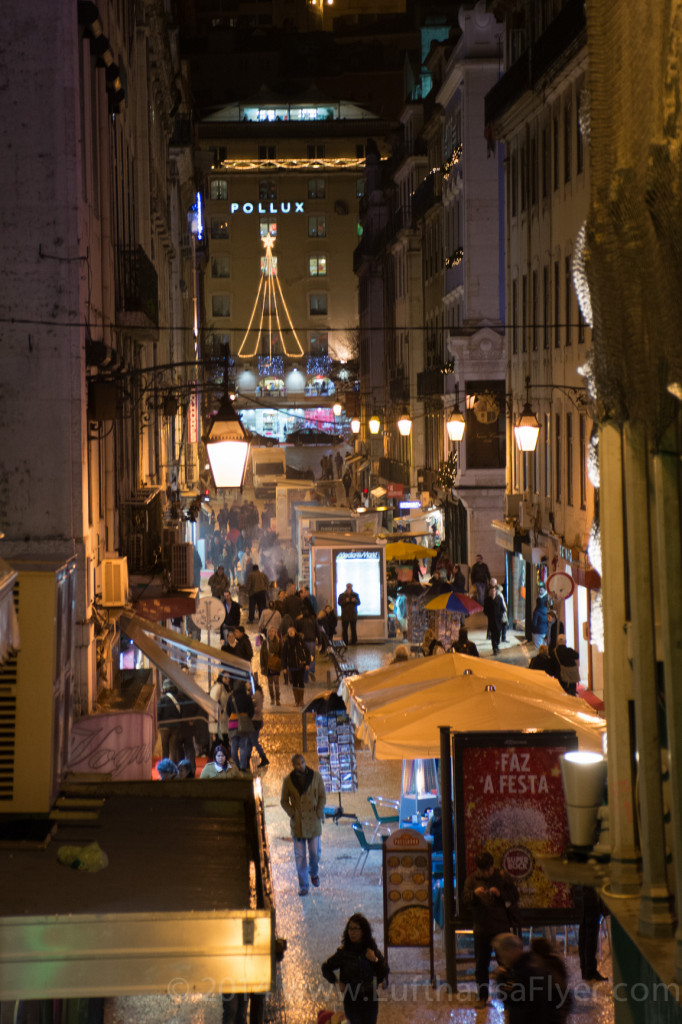
Even a thunderstorm did not prevent people from enjoying the evening.
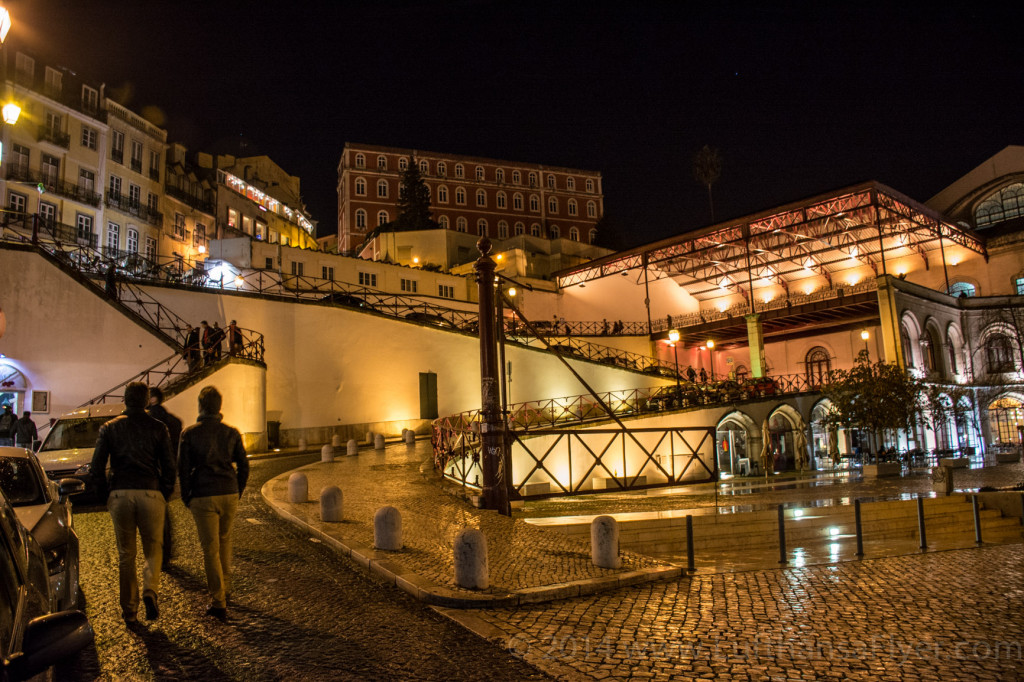
I decided against the climb… 🙂
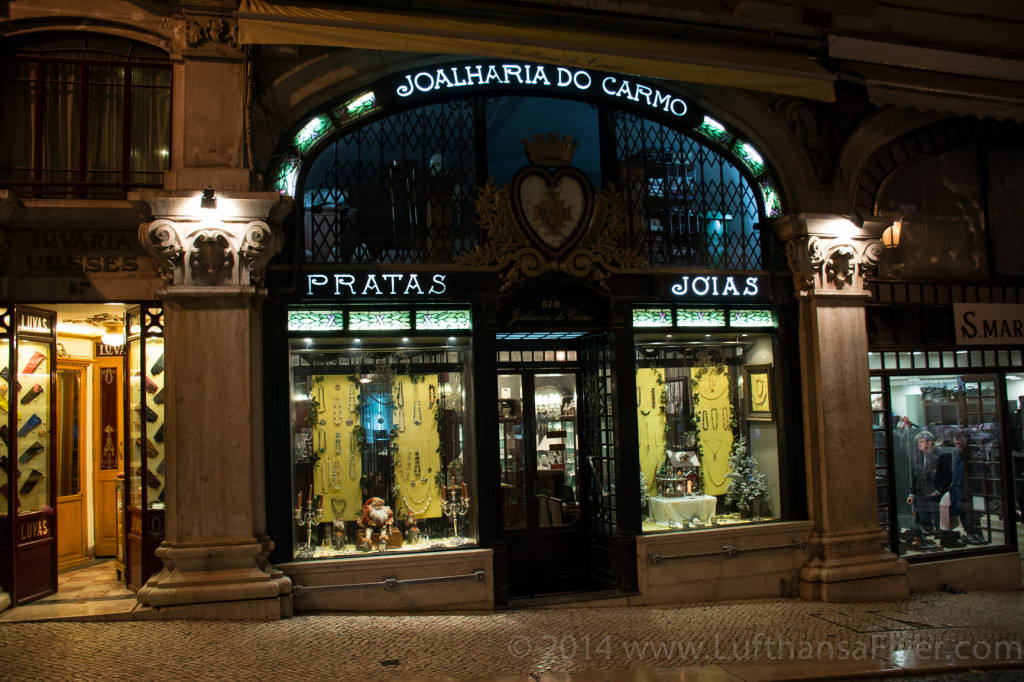
Ornate shops such as this one line the streets of Baixa.
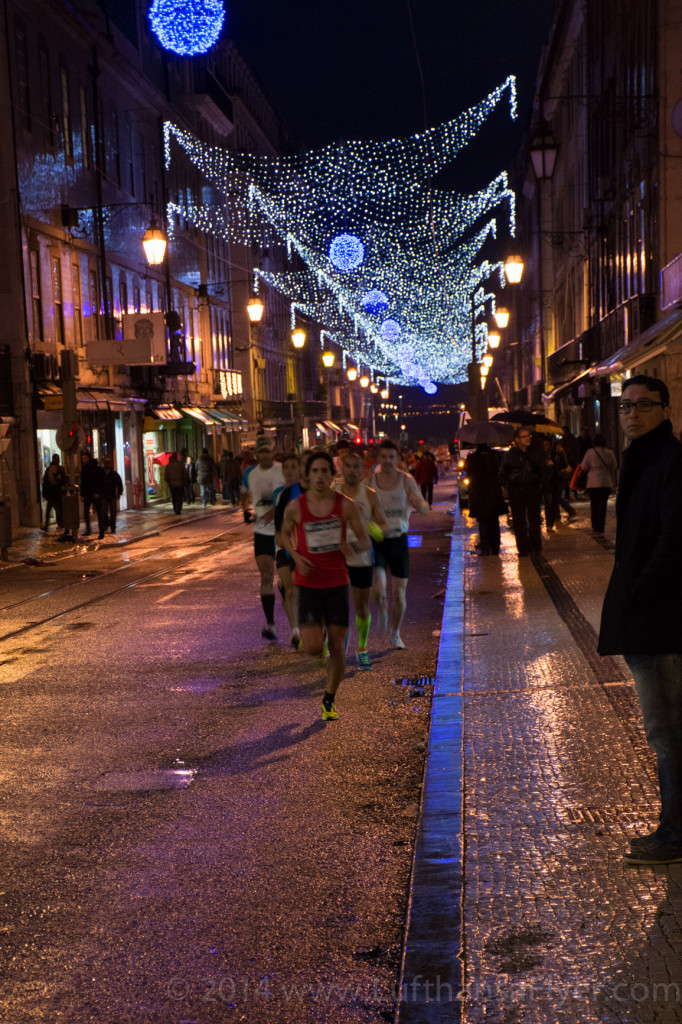
A part of the marathon passes by……

The Marathon’s finish line….runners and spectators filled the square well into the night.
Index to other Trip Reports:
Vienna’s Naschmarkt
Slovakia’s Cachticky Hrad
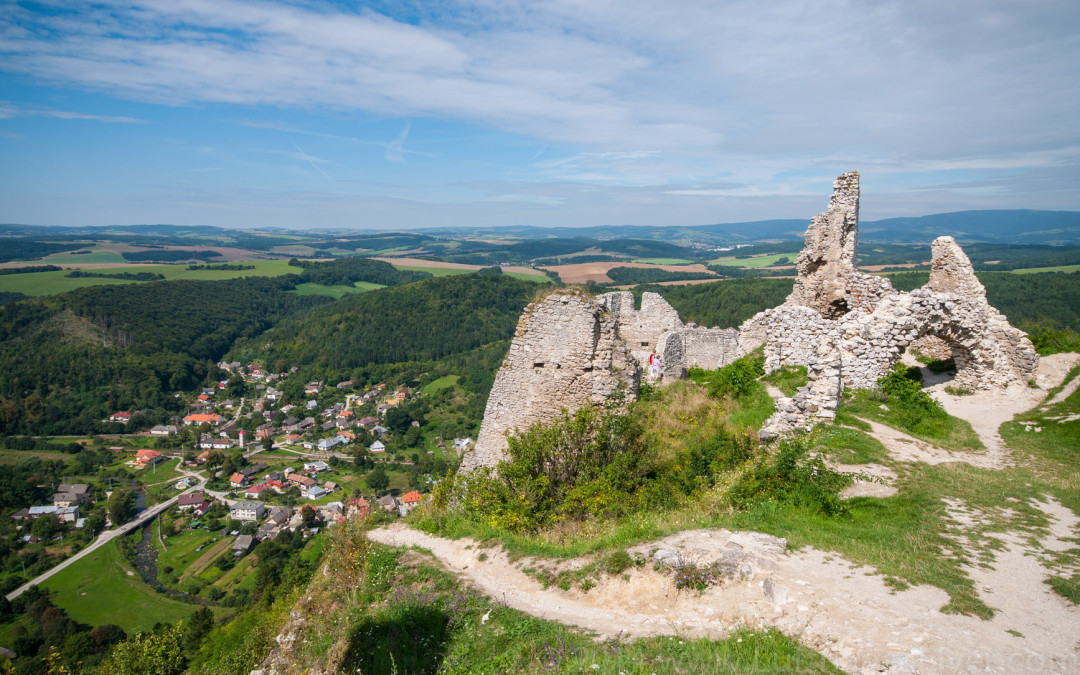
by Lufthansa Flyer | Mar 13, 2014 | Featured, Trip Reports |
Over the course of my life, I have been to Slovakia dozens of times, recently as many as 2-3 times a year to visit family which includes among all my cousins, aunts and uncles, my 99 year-old Grandmother. For the majority of my trips I arrive and shift into ‘local’ mode. I tuck the English language into my carry on and proceed to blend in among the locals. I do this so well, that one shopkeeper who was helping my wife and I purchase something during one of our visits took me aside and congratulated me for marrying an American girl, saying how hard it is for a Slovak to find a good American woman.
Because of my desire to not be a tourist or even show signs of being a foreigner, I tend to never ever do ‘touristy’ things in Slovakia. I normally spend time with my cousins and their families or grab a rifle and go for long hikes in the woods behind my Grandmother’s farm hoping to run into a Wild Boar or better yet a Bear or Wolf. However one time, just one time, with my wife on one of these trips she convinced me to leave the village enclave and go see something that tourists go see.
My wife is a fan of paranormal history and ‘strange stuff’ like True Blood, The Walking Dead etc. so it should not have come as a surprise that she wanted to visit the ruins of Čachticky Hrad, the home of perhaps the world’s most ‘successful’ female serial murderer whose legend states that she would abduct young girls from surrounding villages and bathe in their blood in hopes of eternal beauty. In some circles, due to her links to Transylvania, she was referred to as a Vampire.
This is the legend that surrounds Elizabeth Bathory. Born in 1560 and passing away in 1614, she was accused of abducting and murdering 100’s of young girls in her quest for beauty. Witnesses corroborated these claims of torture, sadism and murder but thanks to wealth and an influential family, she was never held accountable for her alleged actions. Being from the same noble family who ruled Transylvania allowed her to avoid prosecution and execution.
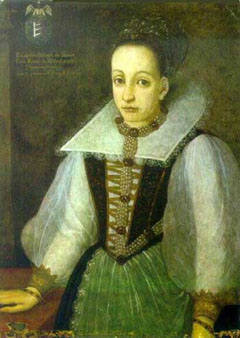
Elizabeth Bathory
However, her family did place her under house, or in this case ‘Castle Arrest’ in 1611 and forbade her to ever leave the compound. She was actually sealed by bricks into a series of rooms inside part of the castle thus making it a prison. The only access to her was were small openings to allow ventilation and to pass her food.
This castle, Čachticky Hrad (Hrad meaning Castle) was actually a gift to her from her Husband, Ferenc Nadasdy whom she married in 1575 when she was 14 years old. Ferenc succumbed to wounds suffered in war and died in 1604. The irony in all of this is that her husband had asked Gyrogy Thurzo to look after his wife and children after his death. Thurzo would wind up being asked by King Matthias II to investigate the crimes against her, which eventually led to the indictments against her. It’s quite a fascinating story and has become a popular fairy-tale throughout Eastern Europe.
History lesson not withstanding, when my wife learned that we would be near Čachticky Hrad while in Slovakia, she made it a high priority for us to visit. I stubbornly agreed but ultimately I was glad that she pulled me out of ‘local Slovak guy’ mode. This meant I had to put down my 16%/alcohol beer and smoked bacon/horseradish sandwich and be a tourist for an afternoon.
When we arrived at Čachticky , an angry mule would not have been able to kick the smile off of my wife’s face. She lit up like a little kid and raced down the path through the forest that would lead us to the castle. I was just hoping that a boar would not come out and spoil her fun…..
Once at the Castle grounds even this wannabe ‘local’ was impressed with what we saw. The castle is in deep ruin yet there is a certain beauty and sadness to her. What was once a prominent and imposing structure had been reduced to a few walls and remnants of ancient towers that allowed castle inhabitants to survey lands for miles and miles around. Sad really.
In the following photos, I hope that I captured this beauty and sadness. Since Slovakia is peppered with Castles, thanks to countless rulers over the centuries, there are many of them that are in fantastic shape and could even be lived in today. It is these Castles that most guide books and locals would suggest you go visit and tell you to avoid ruins like Čachticky because there is nothing there to see. I love this kind of advice because when we arrived to Čachticky it virtually empty and we basically had the place to ourselves which made it that much more memorable for us.
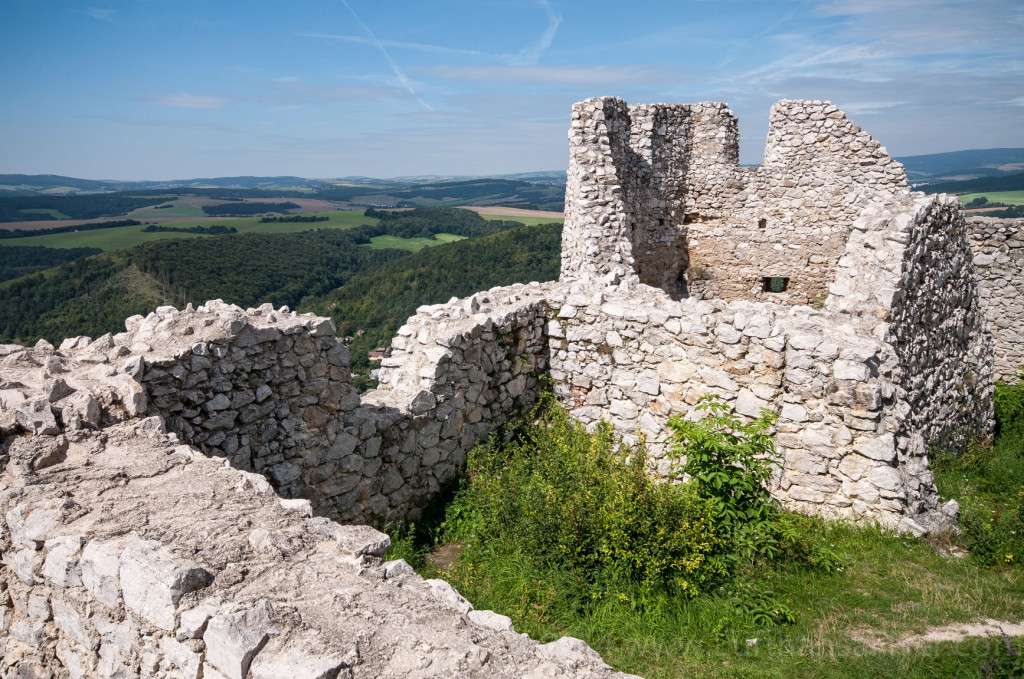
Absolutely stunning views from anywhere on the Castle grounds
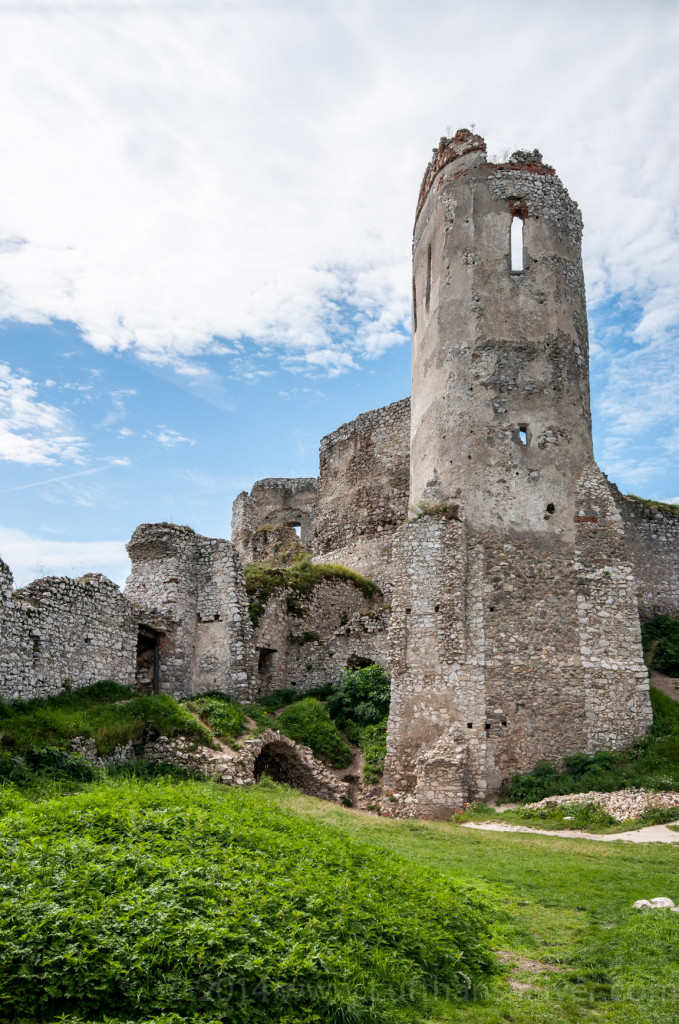
Remnants of one of the last remaining towers.
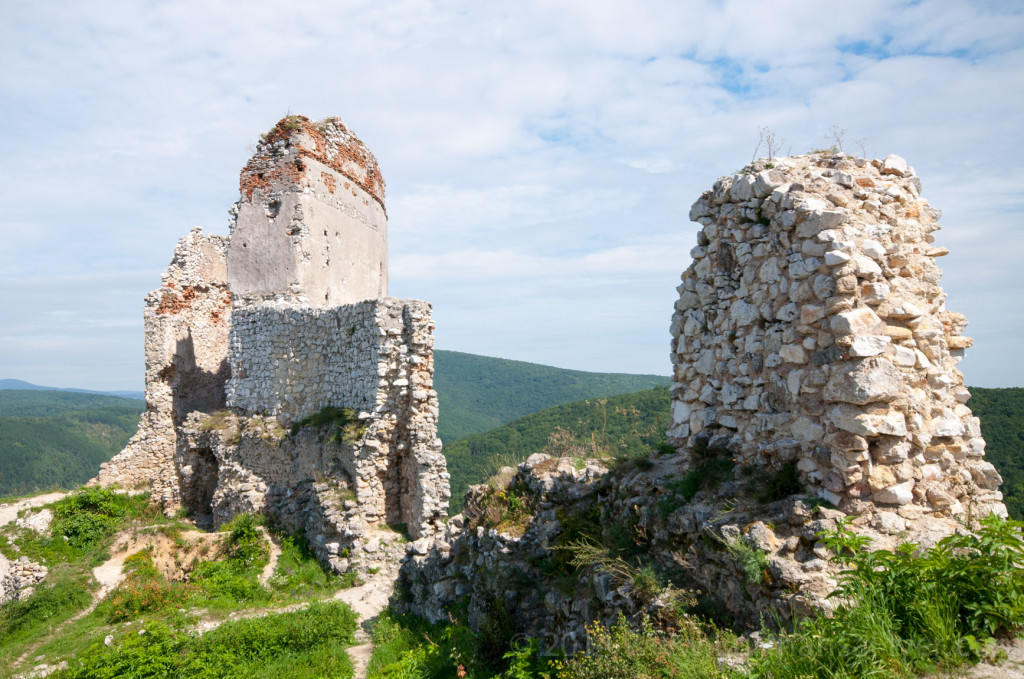
More of the beautiful ruins….
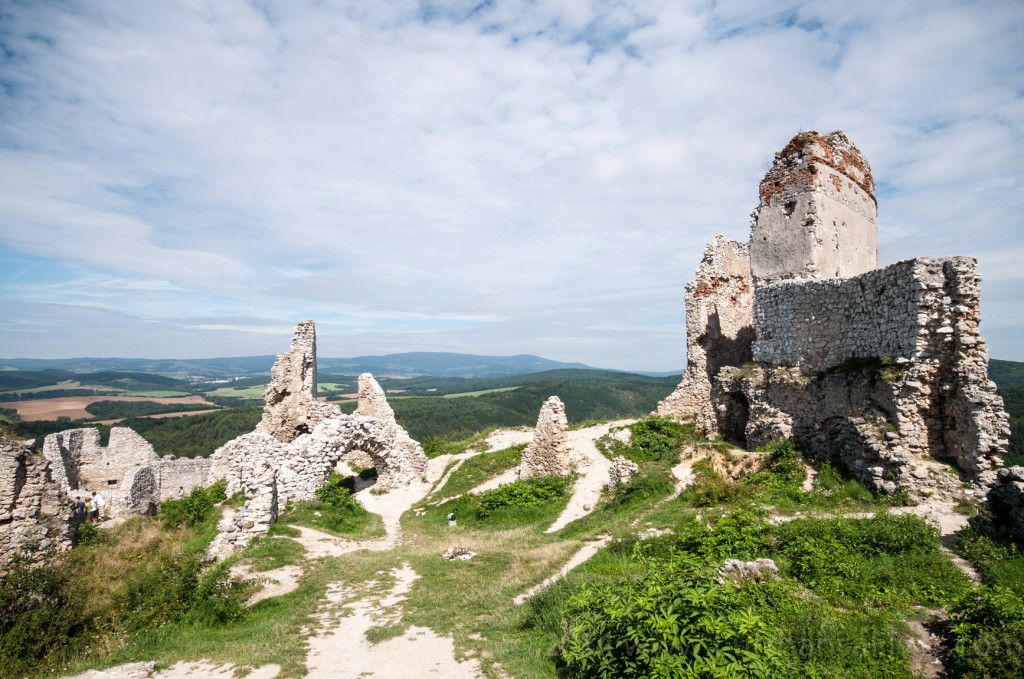
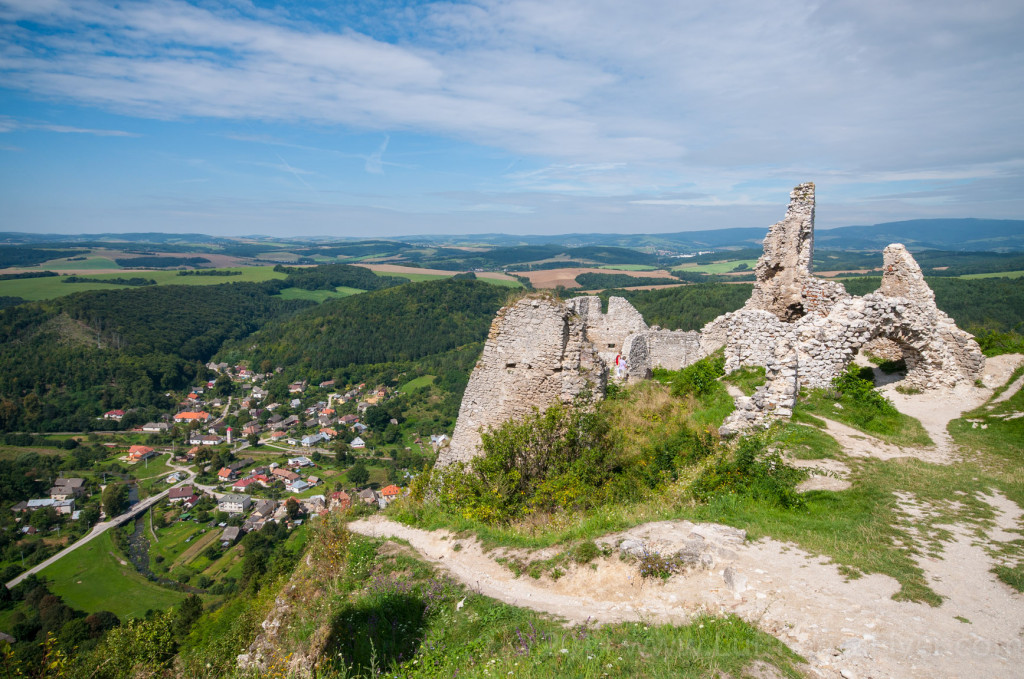
My first thought, I wonder if I can drive a golf ball down into the village. Next time I’ll come prepared!

A sad but beautiful place….
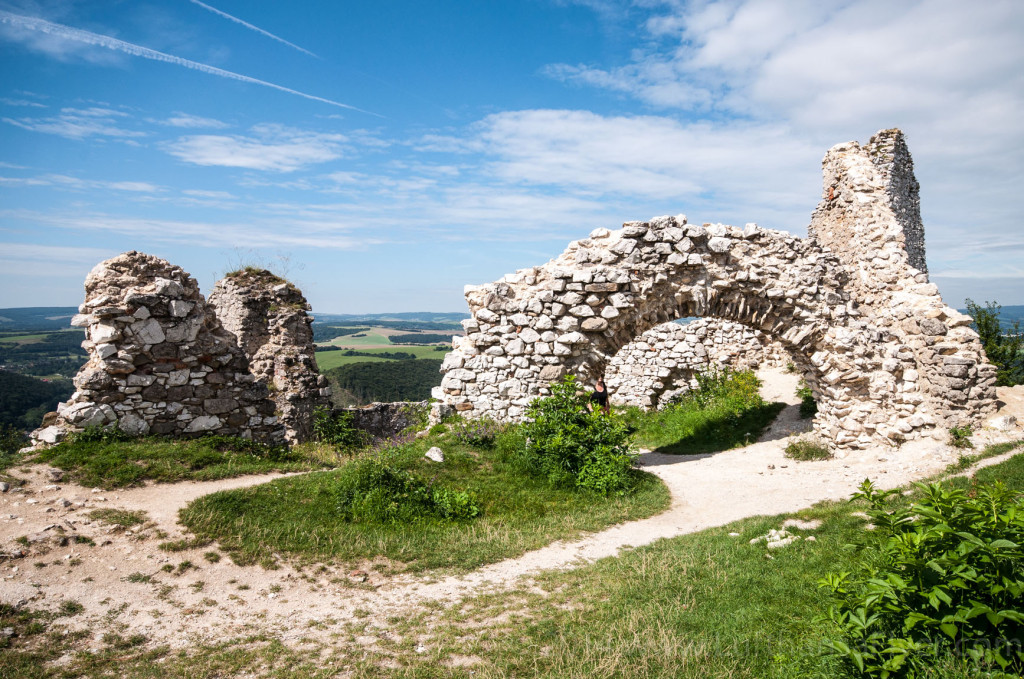
Ancient Arches have withstood nearly 450 years of decay…..
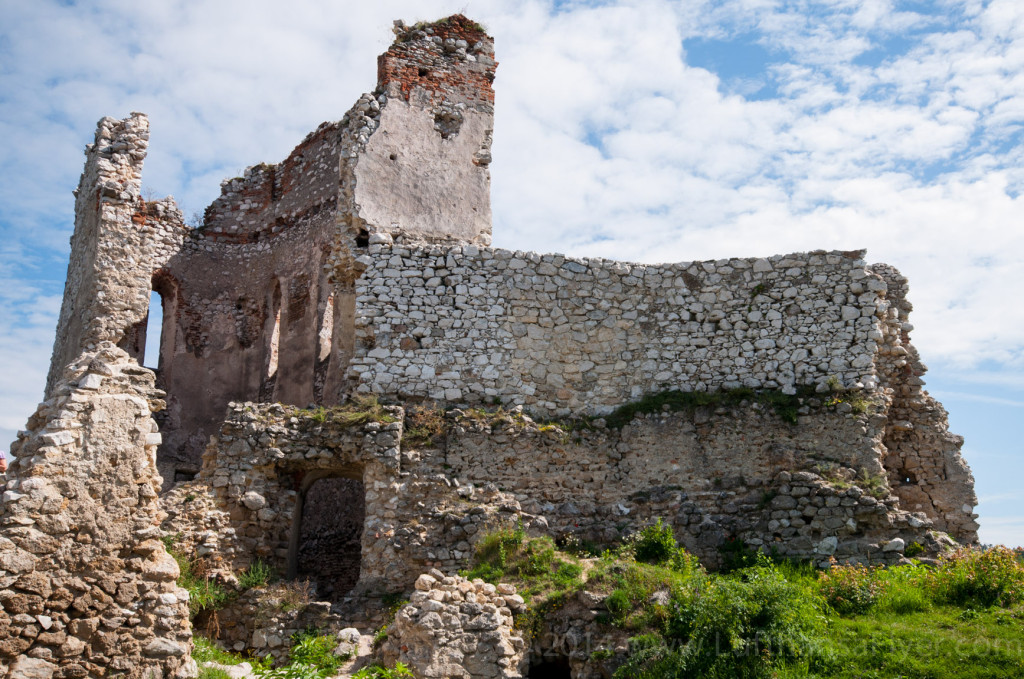
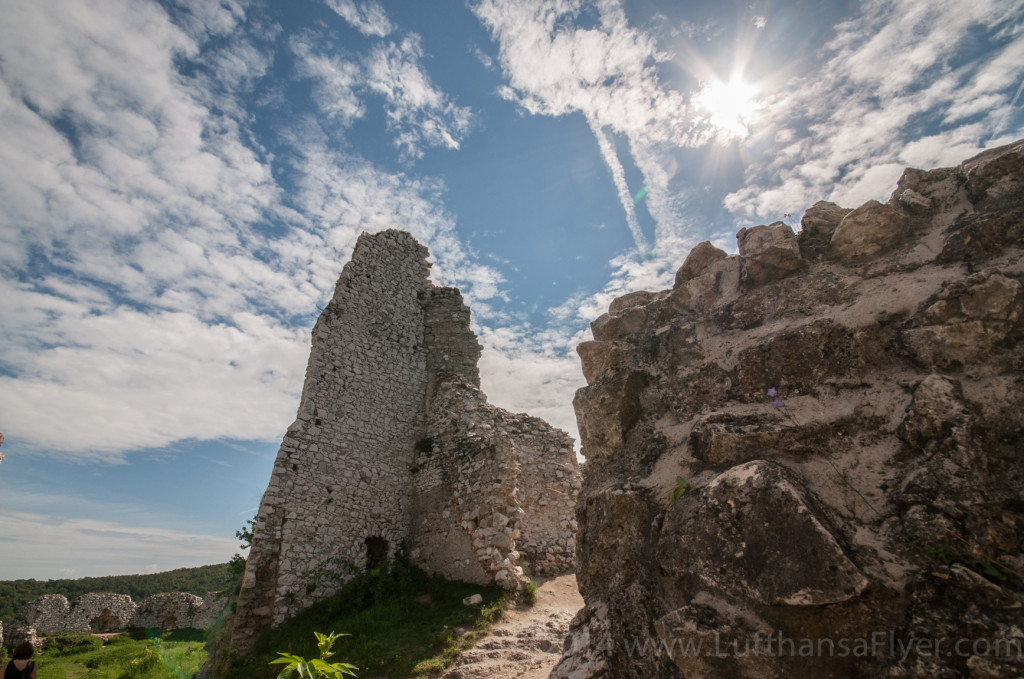
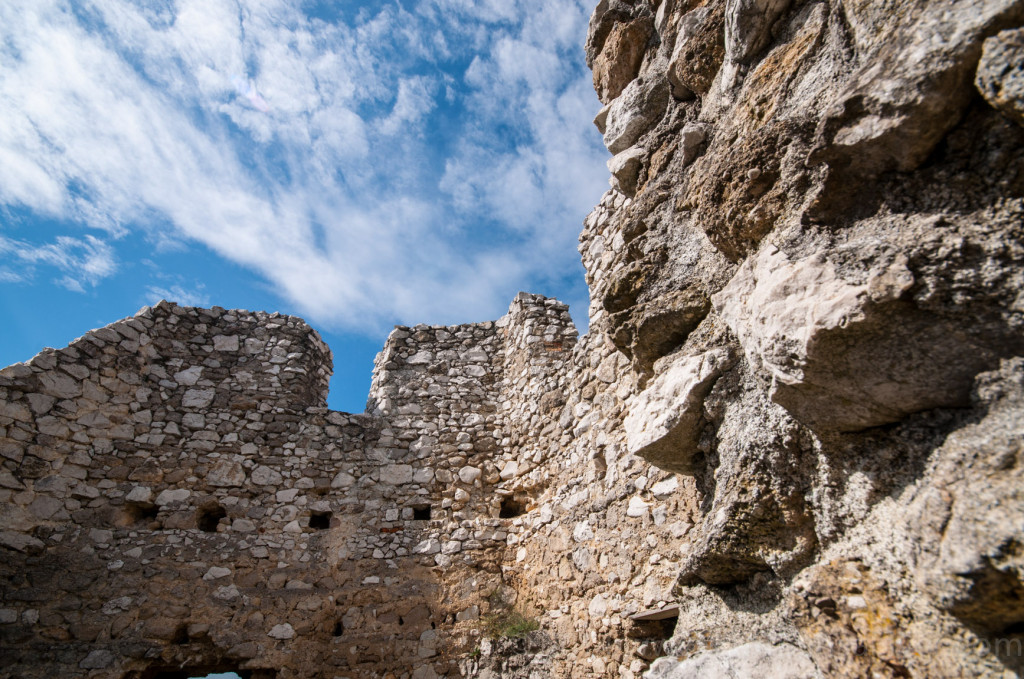
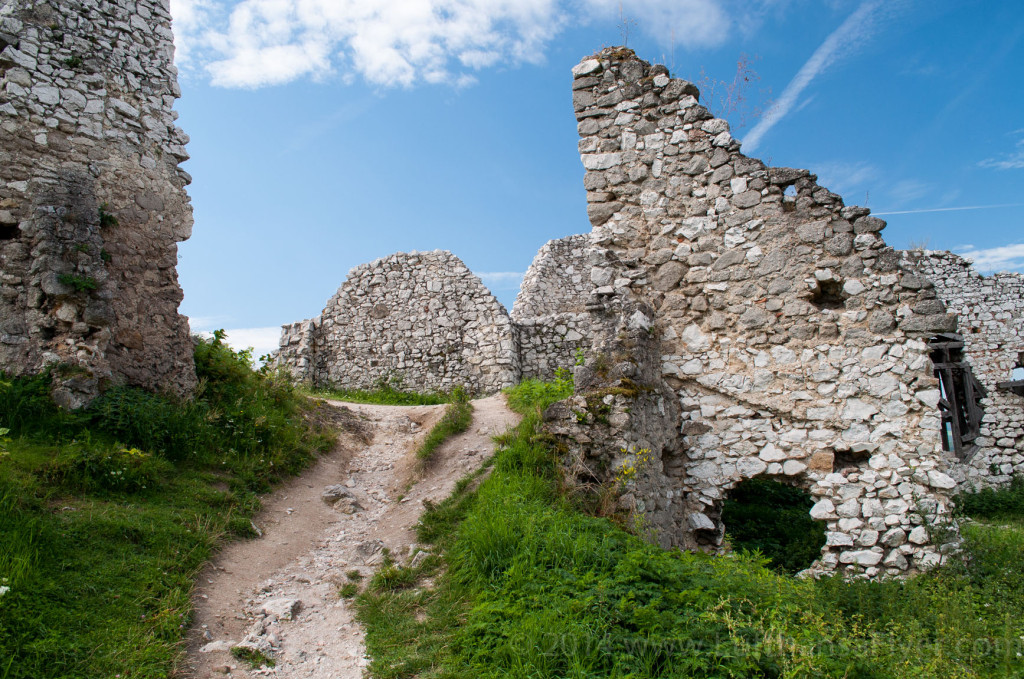
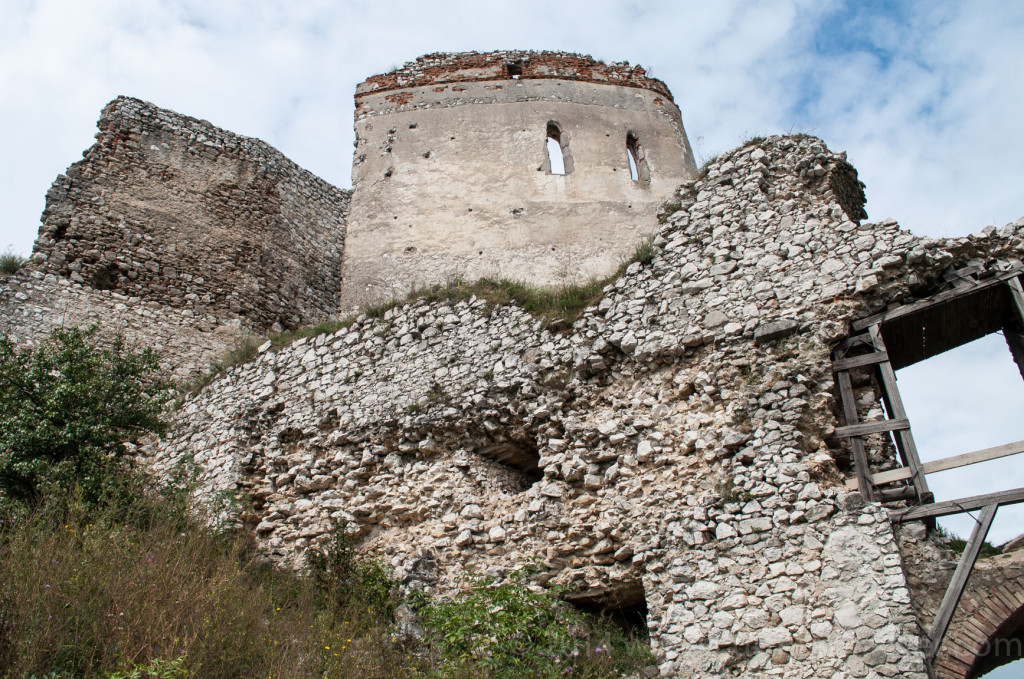
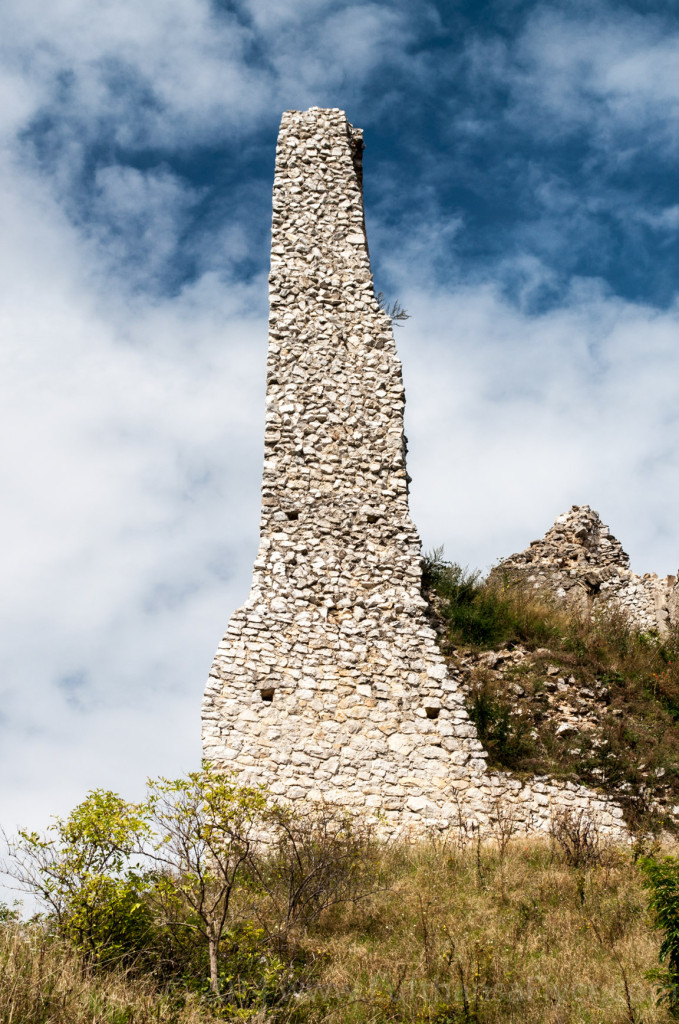
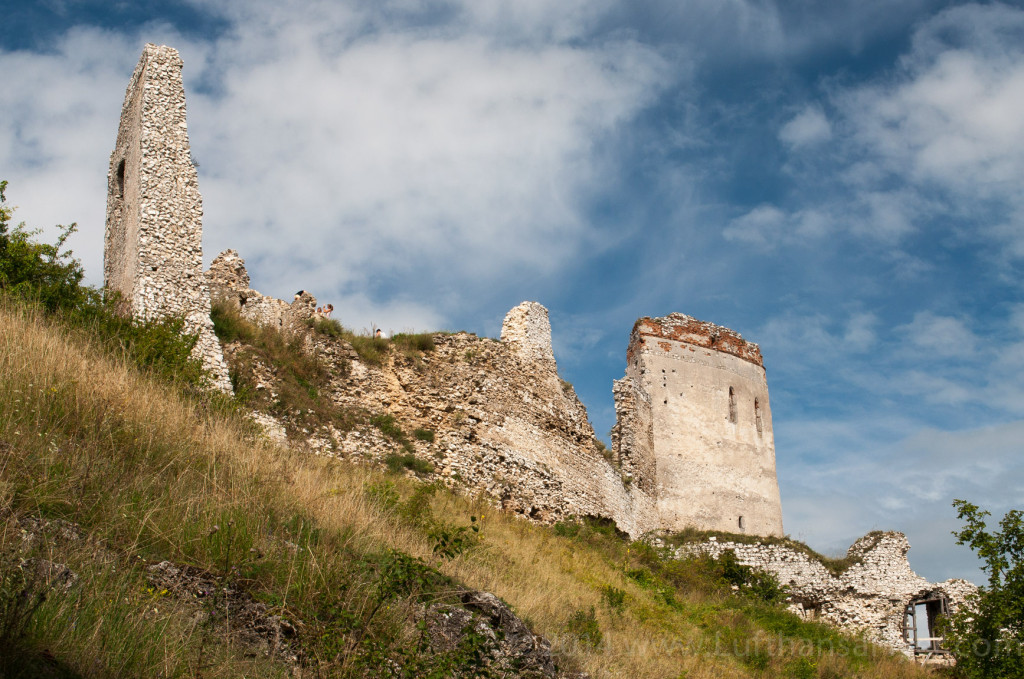
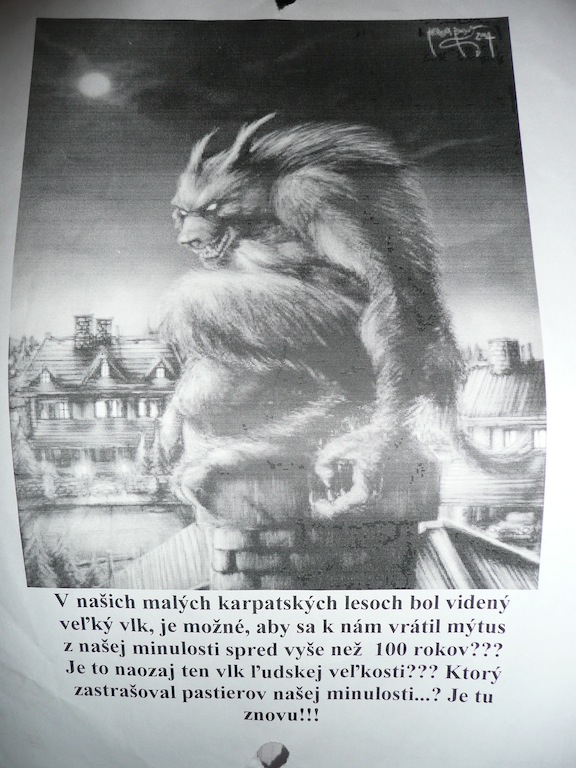
An interesting flyer was attached to a post on the Castle grounds……….Translation: In our small Carpathian Forest a large Wolf was seen. Is it possible that this Myth has returned to us after 100 years??? This Wolf, as large as a human and who frightened Shepherds in our past is here again!
Index To Other Trip Reports:
Lisbon’s Baixa District
Vienna’s Naschmarkt
Slovakia’s UNESCO Gem





























































































